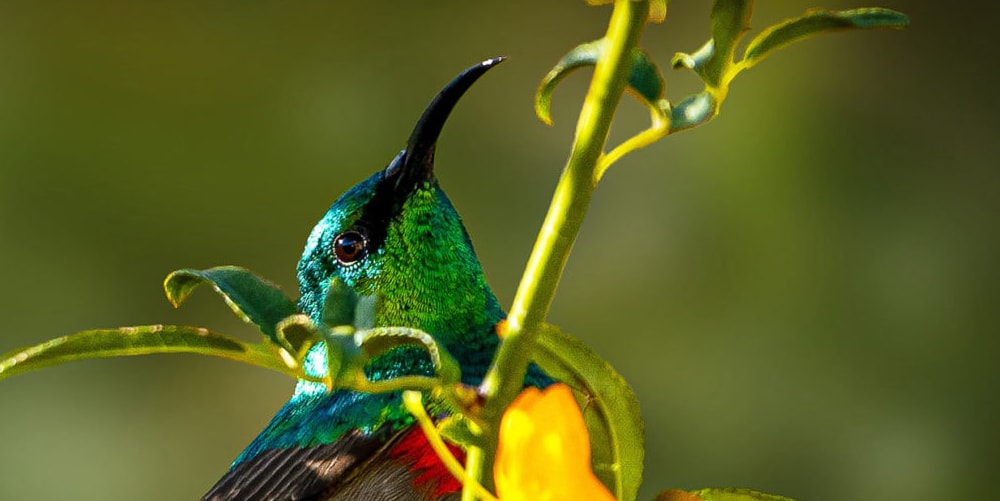As we were road-tripping across South Africa, we found ourselves captivated by the feathery locals we encountered. While these were common birds in South Africa, they were entirely new to us.
Each region offered its avian treasures, from the arid landscapes of the Karoo in the Western Cape to the lush scenic Garden Route and from the wildlife-rich Kruger National Park to the stunning wetlands of iSimangaliso in the east.
Quite a few we found in several places throughout South Africa. So, we thought this post would be a handy guide to help you identify those South African birds you might come across on your travels.
So, keep your eyes peeled and your binos or camera at the ready for some of these common birds in South Africa, and enjoy our beautiful bird photos.
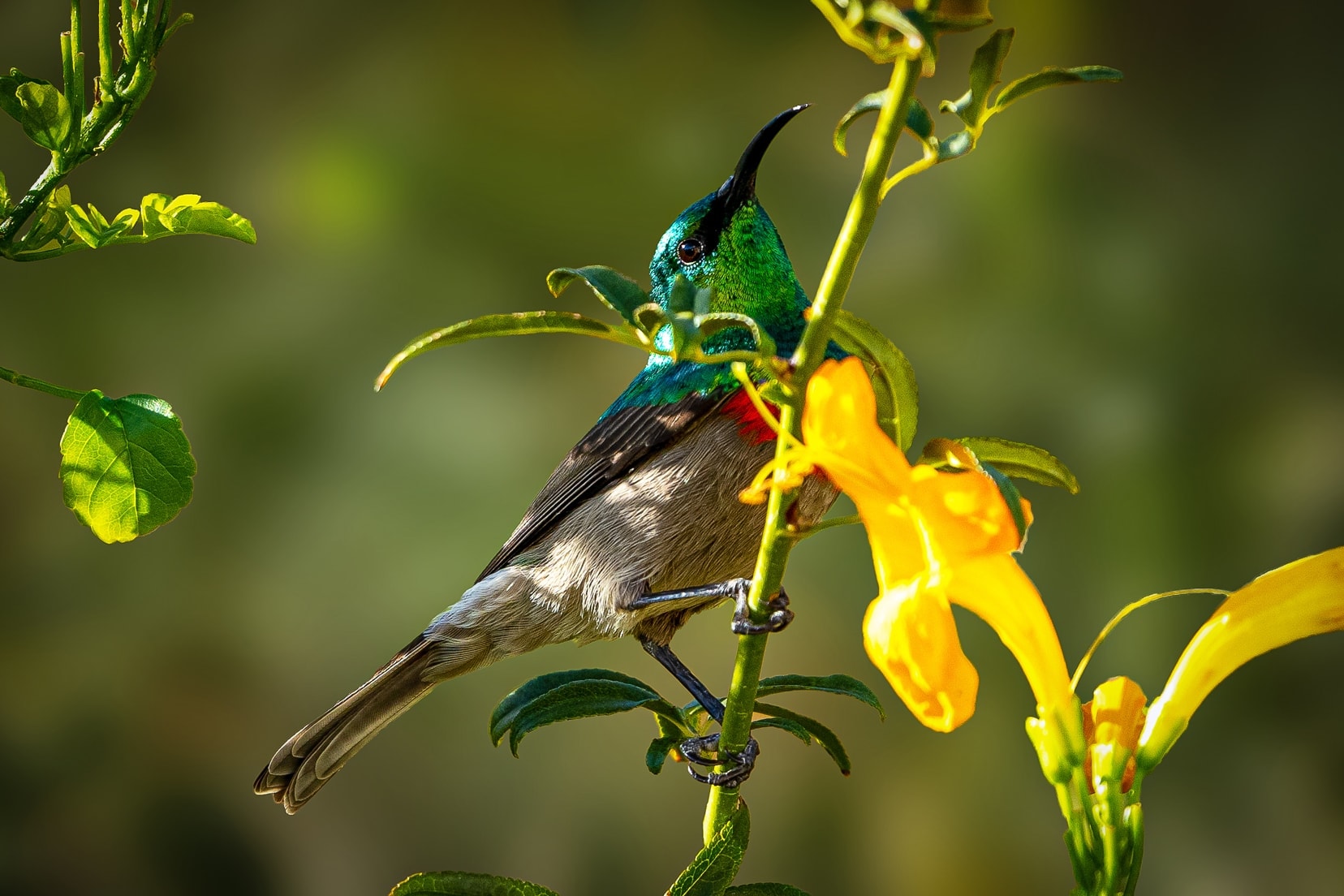
Our Birdwatching Journey During Lockdown
Our first South African trip coincided with the 2020 pandemic. Stuck in a house-sit in Prince Albert, we had lots of time to observe common garden birds found on the edge of the Karoo Desert.
Our first nine-month South African trip coincided with the 2020 pandemic. While we were having a break from camping by house-sitting in Prince Albert, South Africa, the whole country went into a strict lockdown.
Our planned five-week house sit turned into five months. Therefore, we had plenty of time to capture some of the common garden birds that visited us daily.
As we are frequently travelling, we look for house-sitting opportunities to save money while taking a break from camping.
We use TrustedHousesitters to find free accommodation. There are house-sits available all over the world, and using this site alone has saved us thousands of dollars in accommodation expenses. Sign up using our promo code: LIFEJOURNEY25 to save 25% of the joining fee.
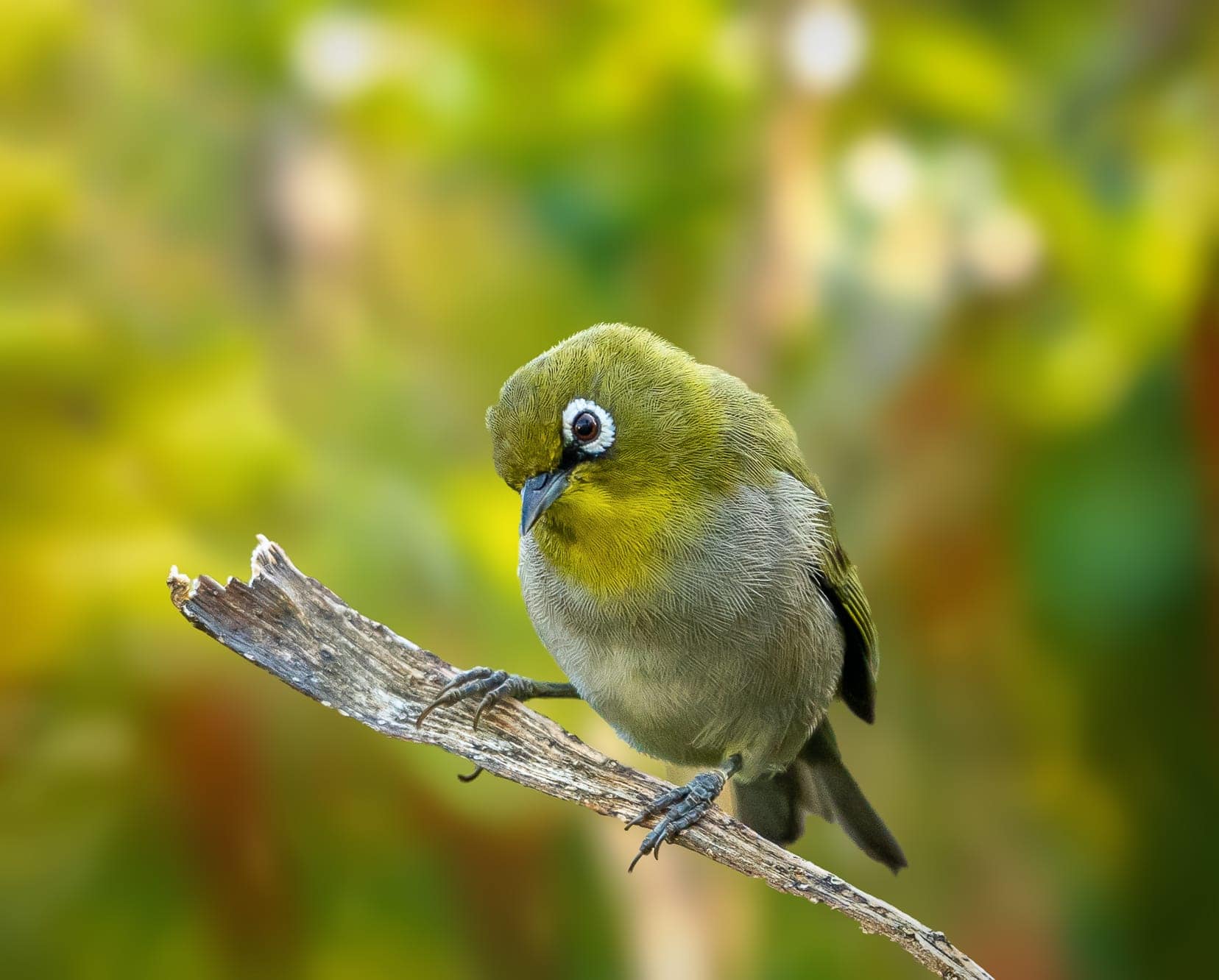
Common South African Birds We Came Across on Our Travels
Most of the common South African birds we cover in this post are found throughout the country, but some are more likely to be found in specific areas.
If you are heading towards Kruger in the northeast, make sure to read our Birds of Kruger post full of all the top birds you’ll likely spot while there.
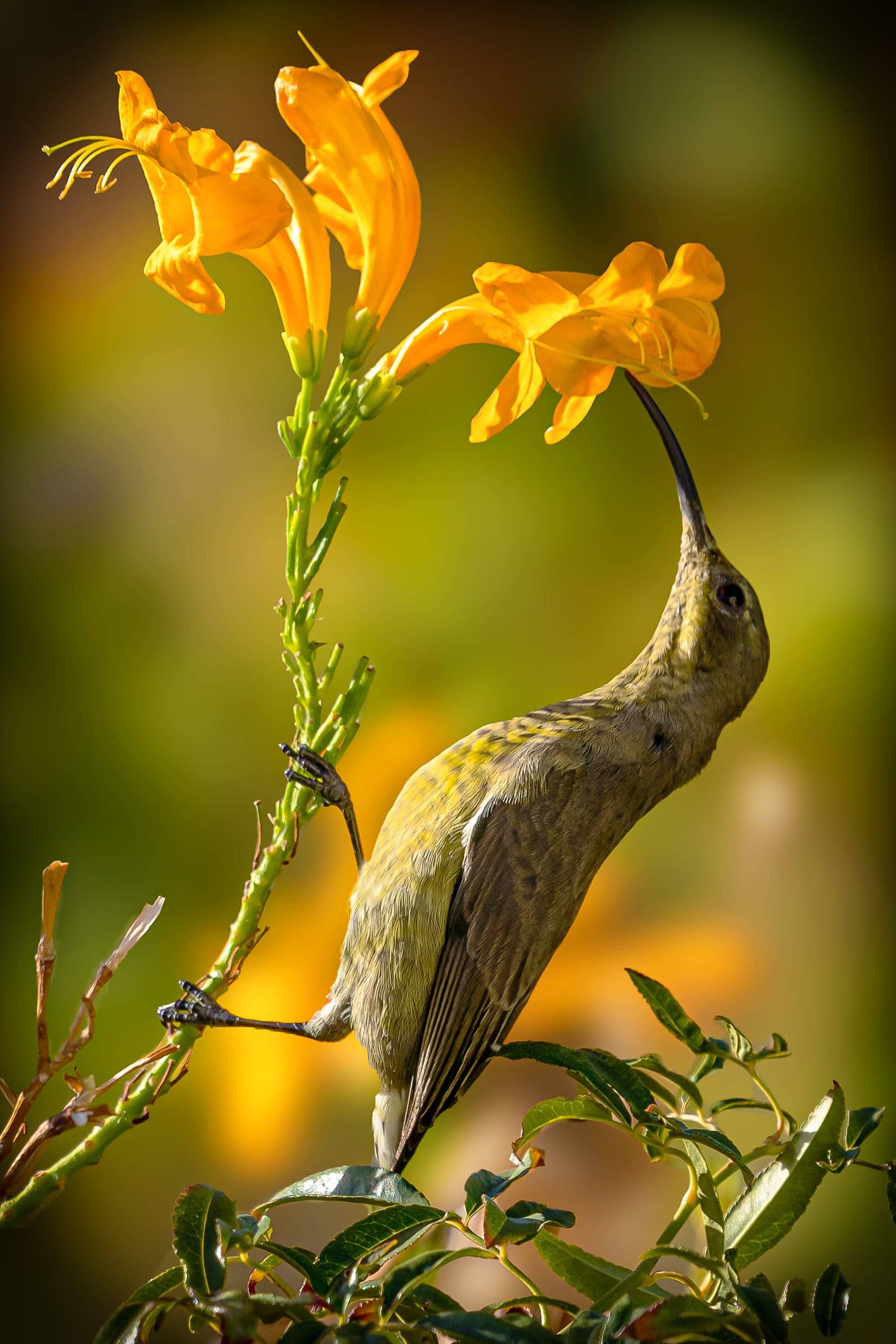
1. Speckled Mousebird
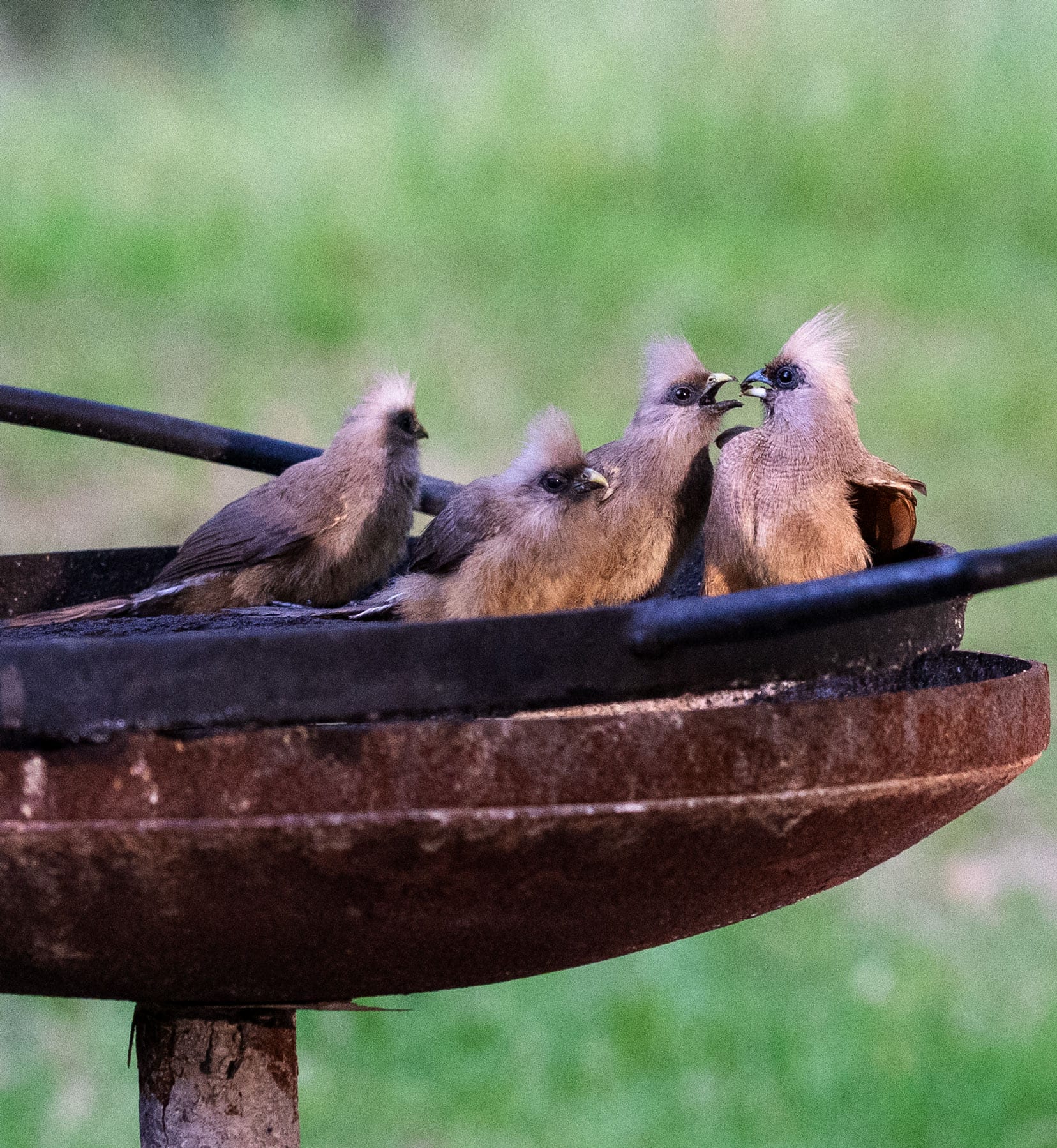
We first saw these cute little birds in Goldengate National Park in South Africa. It was one of the first parks we visited after landing in South Africa after we bought our 4×4 Hilux with a tent on top.
Back then, we had no clue about the birds we were spotting or even the baboon calls echoing in the mountains.
Fast forward to 18 months of exploring Southern Africa, and it’s hard to believe we were once unfamiliar with so many of these birds and the common African sounds.
Now, they’re like a second language to us.
The Speckled Mousebird is a little like a mini Go-away-Bird. It has a long, mouse-like tail, and speckled grey plumage and is often seen in groups. They’re social birds that enjoy sunning themselves in the morning.
You’ll find them in a variety of South African locations and settings, from gardens to forests, making them a common but lovely sight. Their quirky looks and behaviours add a touch of whimsy to any South African journey.
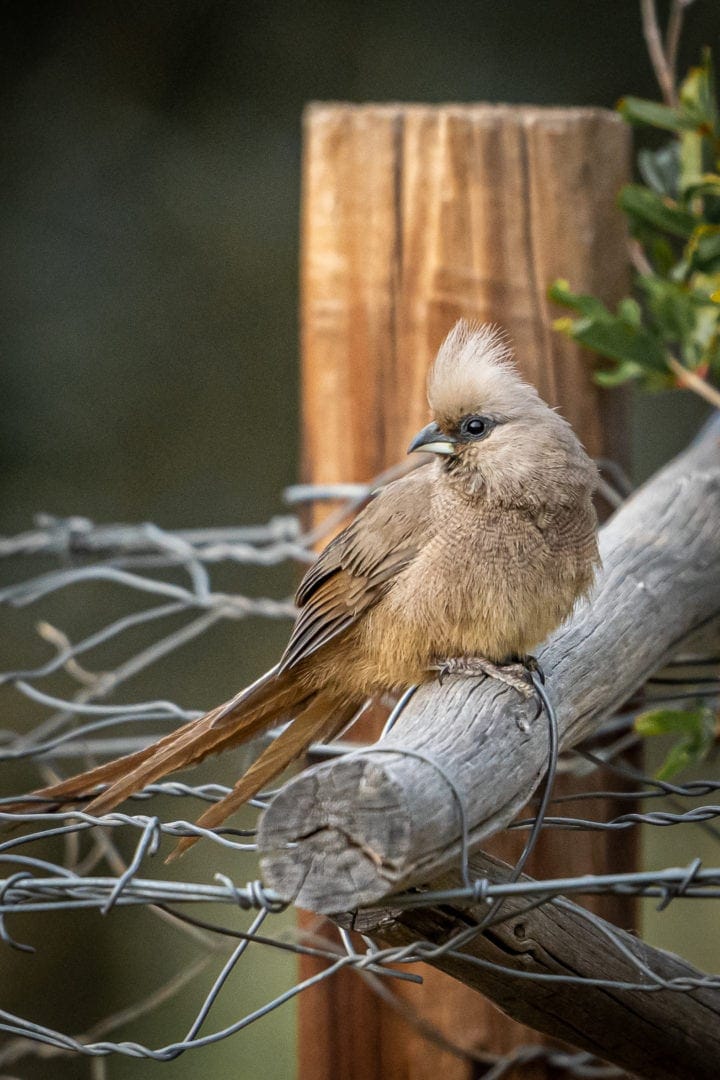
2. Karoo Chat
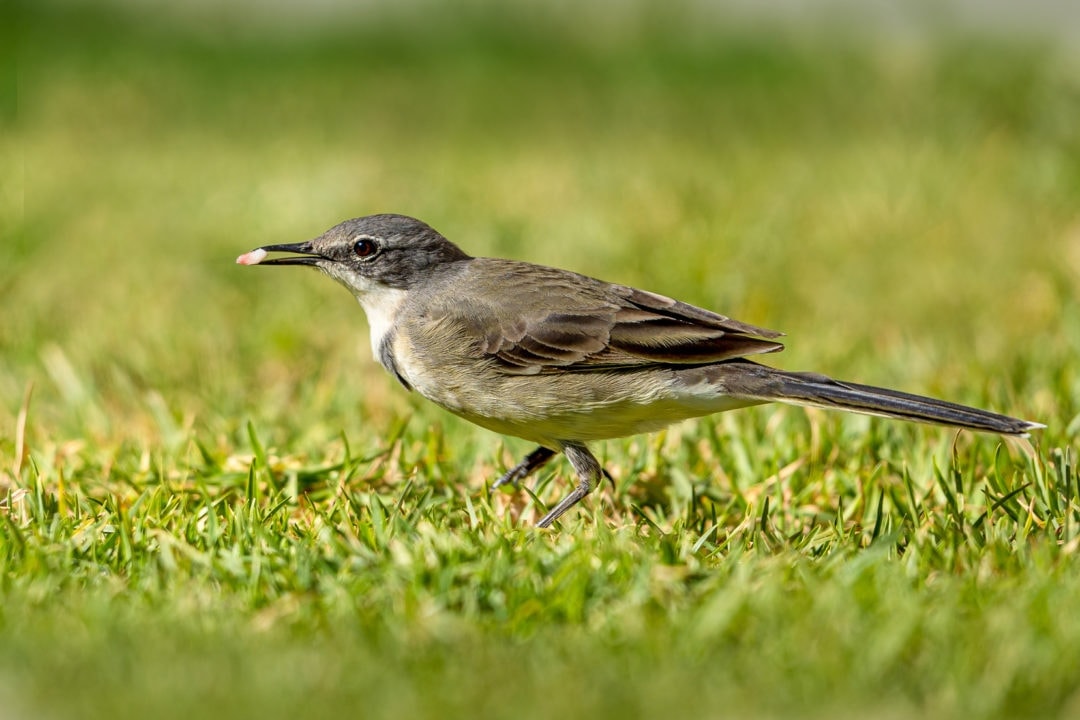
This little Karoo Chat is found in southern and western South Africa and could also be referred to as an LBJ. A term you will likely hear if you are talking bird identification in South Africa.
So, What is an LBJ?
This is exactly what we asked when we kept seeing mention of it in our bird books.
Well, the infamous LBJs are Little Brown Jobs.
That’s what South Africans affectionately call those small, brown birds that seem to be everywhere. Many little brown birds look so similar it’s often too tricky to tell their species.
So, instead of getting tangled in ornithological details, locals dub them LBJs. It’s a humorous nod to the complexity of South Africa’s birdlife and a testament to the country’s rich biodiversity.
You will see many LBJs on your travels.
3. Southern Double-Collared Sunbird
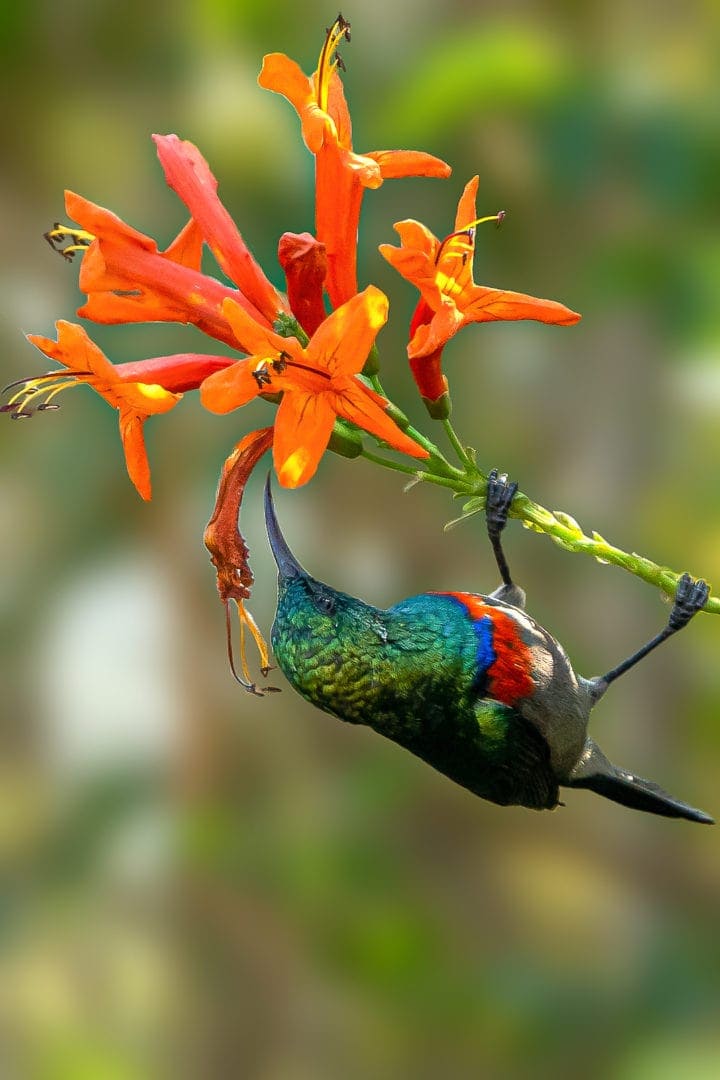
The Southern Double-Collared Sunbird is a real gem that you’ll likely encounter on your travels in South Africa. You’ll find this little beauty mainly along the western, eastern and southern fringes of South Africa, especially in fynbos regions and gardens rich in nectar-producing flowers.
We saw them regularly in the garden in Prince Albert, but also lots in Klaserie Nature Reserve and also on our self-drive through Kruger National Park.
This petite bird is a burst of colour, with the male flaunting a vivid red and orange “collar” that contrasts sharply with its iridescent green plumage. The females are more subdued but equally charming. They’re agile and quick, flitting from flower to flower, sipping nectar with their long, curved beaks.
They flit around so fast that capturing them in flight is almost impossible.
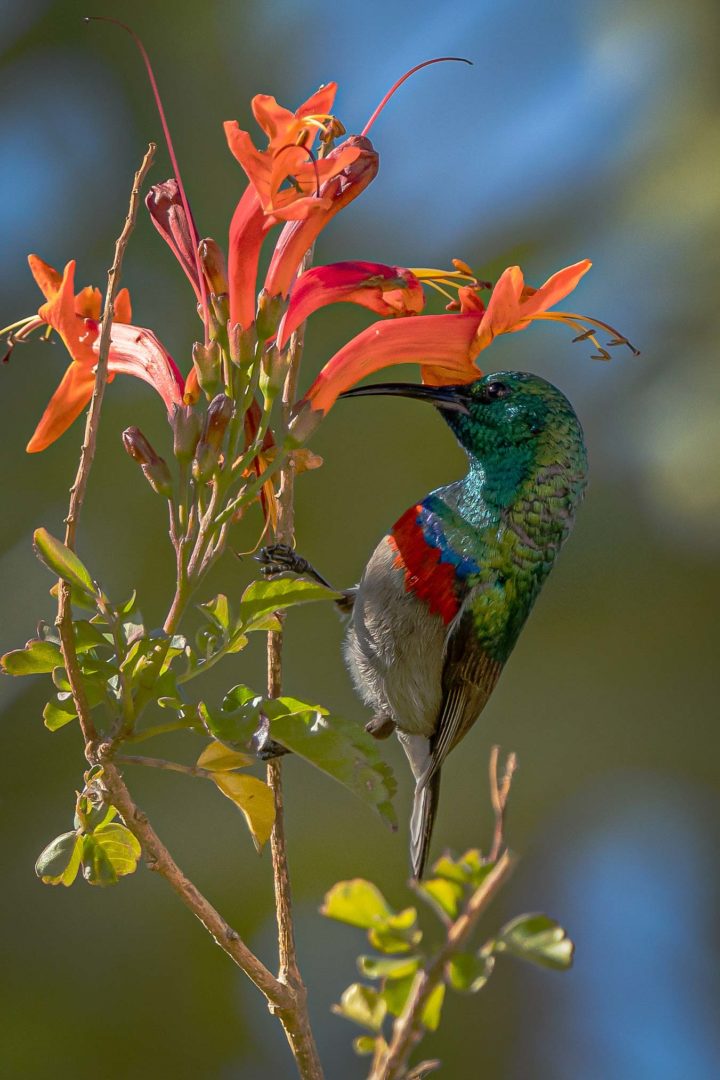
4. Malachite Sunbird
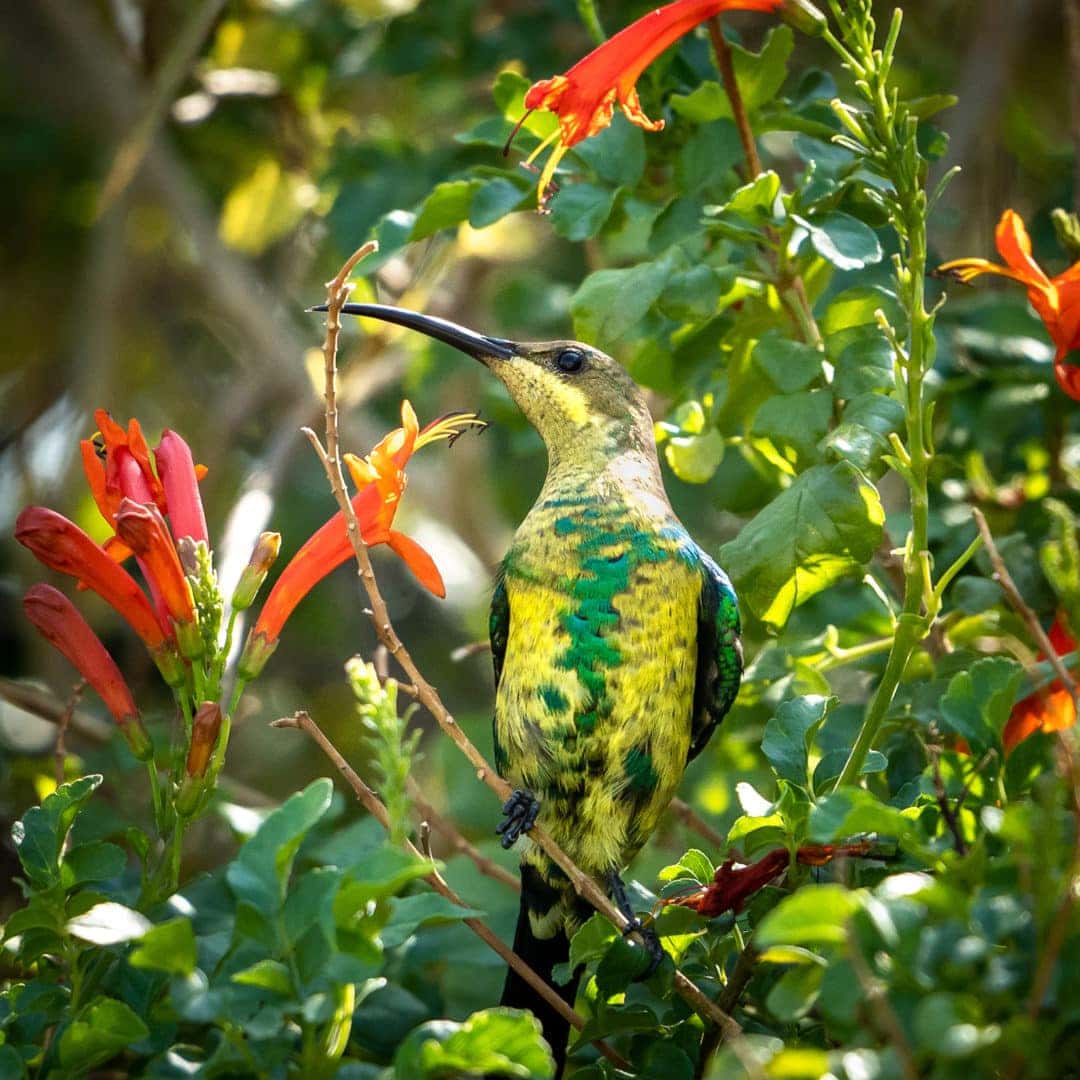
The Malachite Sunbird is another South African stunner you won’t want to miss and is mainly found in the fynbos and mountainous regions.
We saw plenty in our Prince Albert garden.
The male is decked out in iridescent green feathers that seem to change colour as he moves, giving him a magical appearance. The female is more understated in her brownish-grey plumage but is equally captivating.
These sunbirds are nectar feeders, and you’ll often see them hovering near protea and aloe plants, their long, slender bills perfectly adapted for sipping nectar.
If you’re trekking through the fynbos or exploring the Cape Floral Region, keep your eyes peeled for this dazzling bird. It’s a sight that perfectly encapsulates the unique beauty of South Africa’s wildlife.
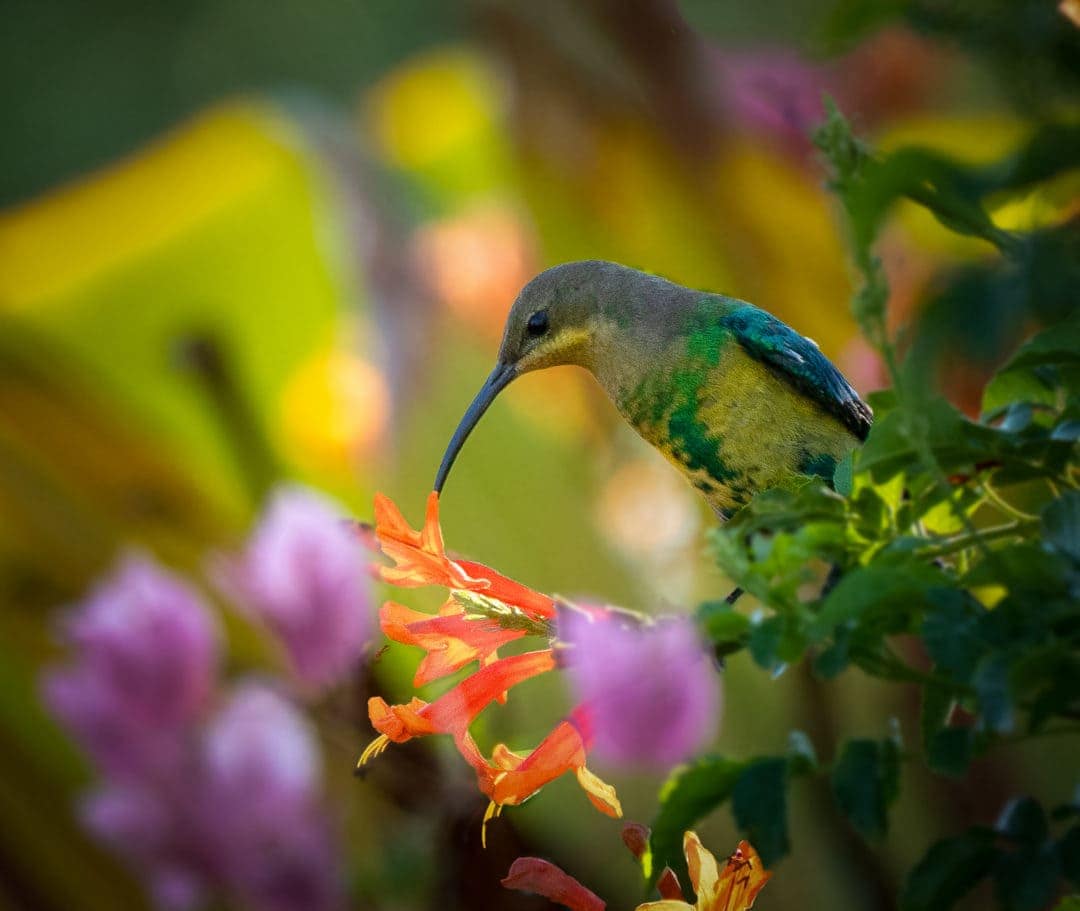
5. Cape Robin-Chat
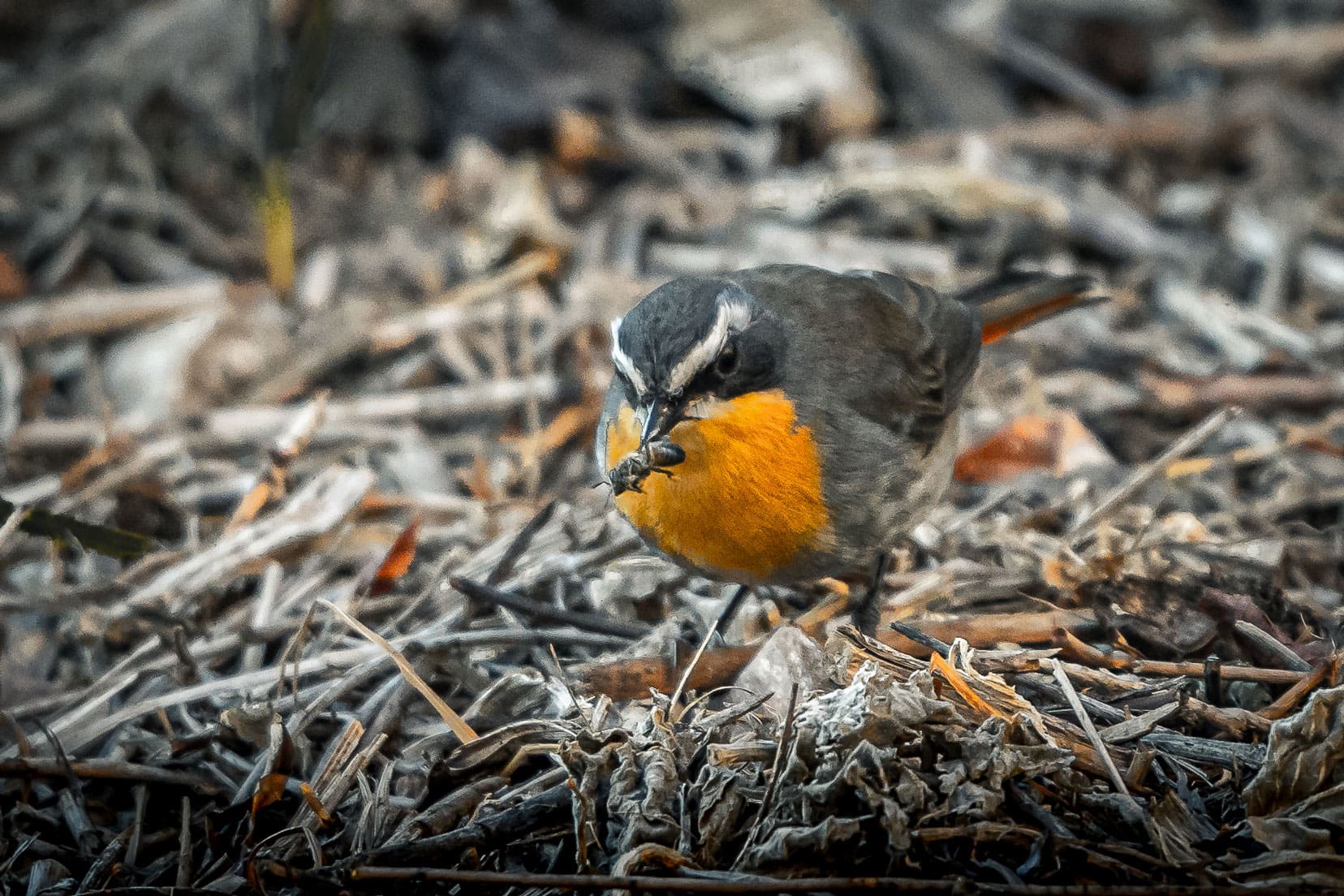
The Cape Robin-Chat is a charming little bird that you’re likely to encounter in a variety of habitats across South Africa, from gardens to forests and even mountainous areas.
It’s quite easy to recognise as it resembles the European Robin, with its orange/red breast and grey-brown back.
What sets the Cape Robin-Chat apart is its melodious song, a series of intricate notes that can brighten up even the gloomiest of days. Often seen foraging on the ground, this bird has a varied diet that includes insects, fruits, and small vertebrates.
So, whether hiking in the Drakensberg or enjoying a quiet moment in a local garden, listen out for the Cape Robin-Chat’s song.
We saw the Cape Robin-Chat in several places in South Africa. The above photo was taken in Isimangaliso Wetlands — while we were on a fantastic guided safari walk, and we stopped to listen to his singing.
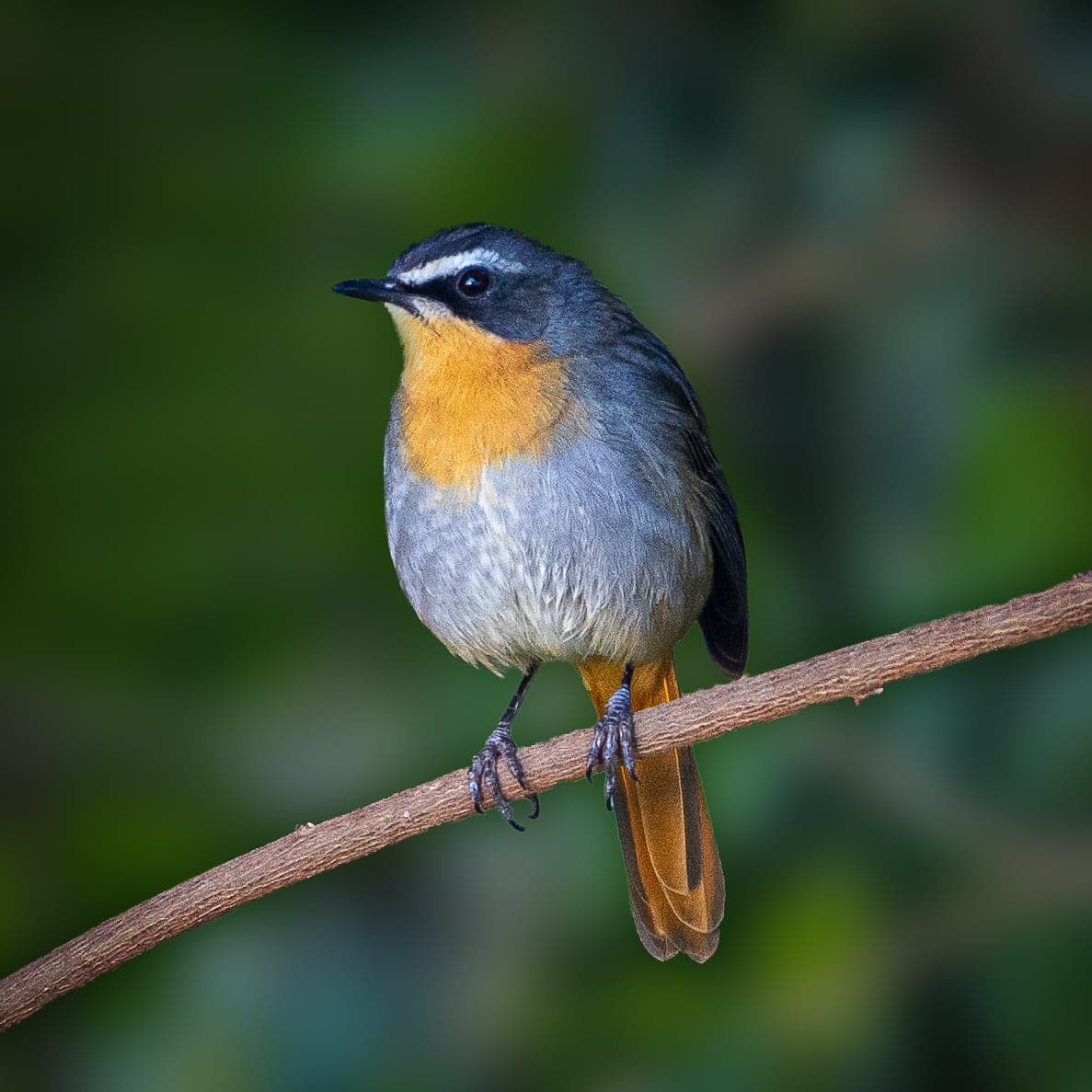
6. Cape White-Eye
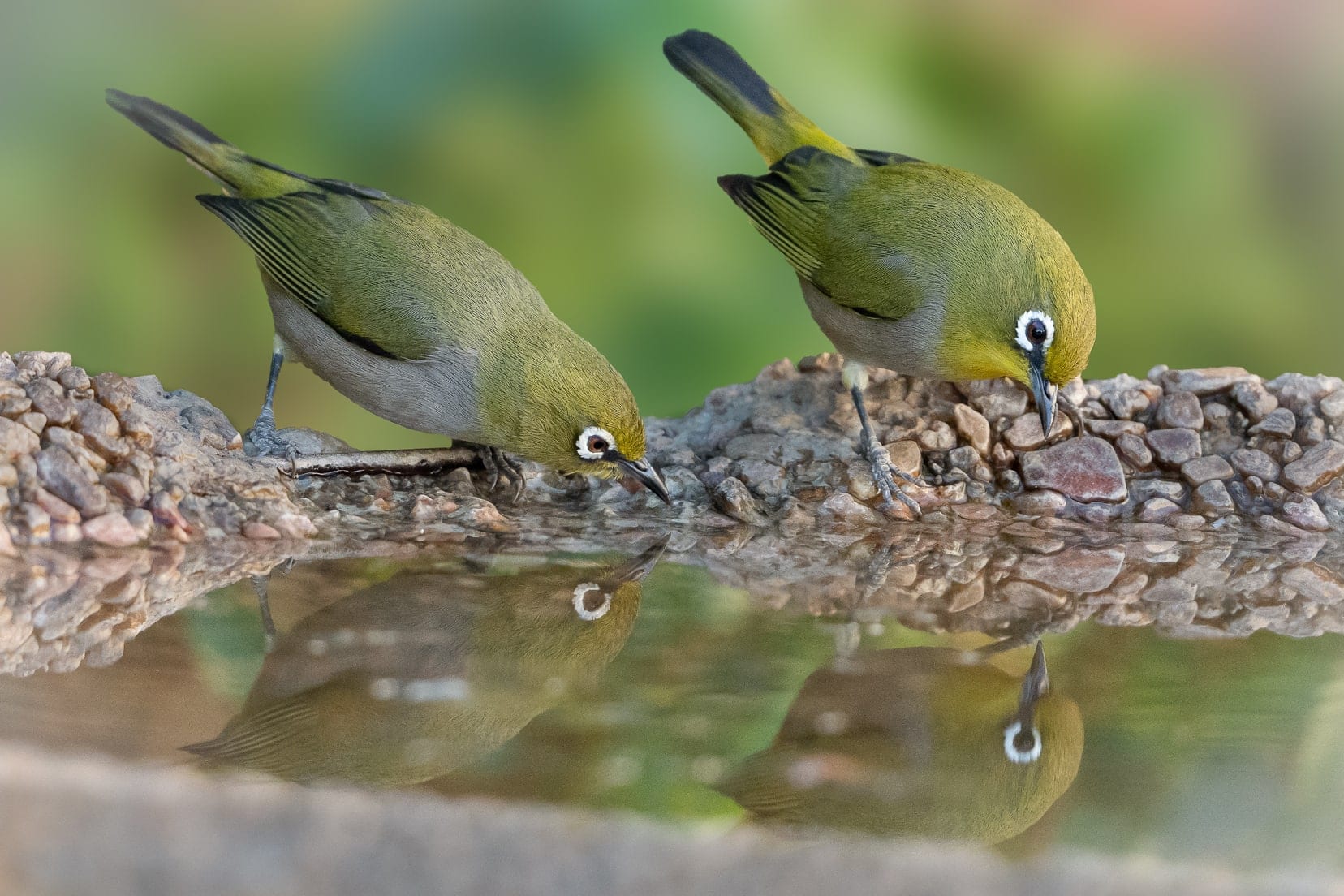
The Cape White-eye is a small, energetic bird that you’ll often spot flitting about in the shrubs and trees of South Africa. With its distinctive white eye-ring and olive-green back, this bird isn’t hard to miss despite its petite size.
We had loads that came to the bird bath in the garden, and we just loved watching them splash around cooling off.
They’re also adaptable, thriving in gardens, forests, and semi-arid areas.
So whether you’re walking in the Garden Route or sipping coffee in a Cape Town garden, keep an eye out for these little beauties.
7. Speckled Pigeons
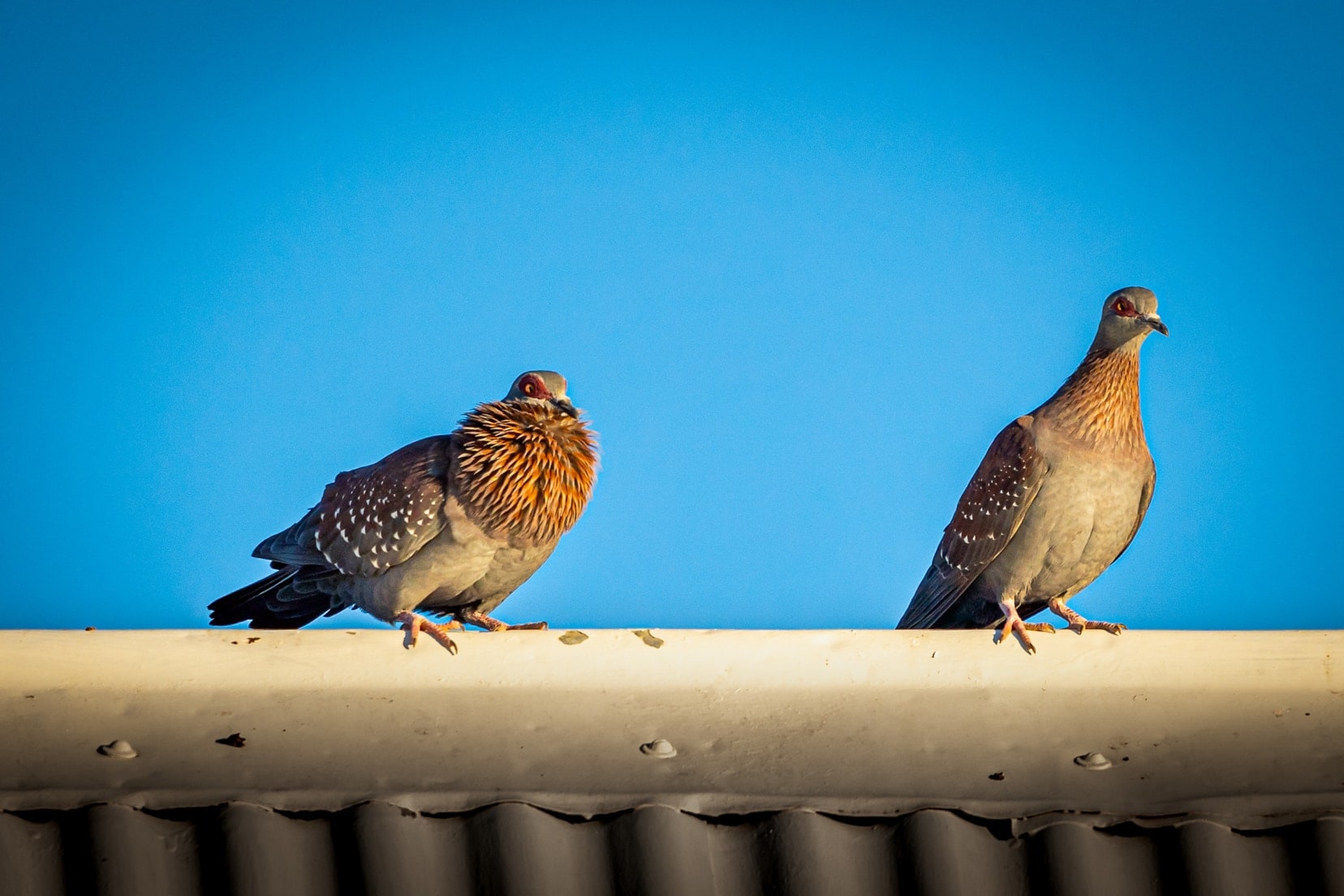
The Speckled Pigeon, often seen in urban areas and farmlands, is another bird you’ll likely cross paths with in South Africa.
Unlike your average city pigeon, this one sports a unique look with its speckled plumage and striking red eye patches. We hadn’t seen anything like this and loved watching them perched on the roof ledge when we stayed in Prince Albert, cooing away.
While they might not be the most exotic birds you’ll encounter on your South African trip, their presence adds a familiar yet distinct touch to the landscape.
So next time you’re enjoying a sundowner on a terrace, don’t be surprised if a Speckled Pigeon drops by to join the party.
8. Lilac Breasted Roller
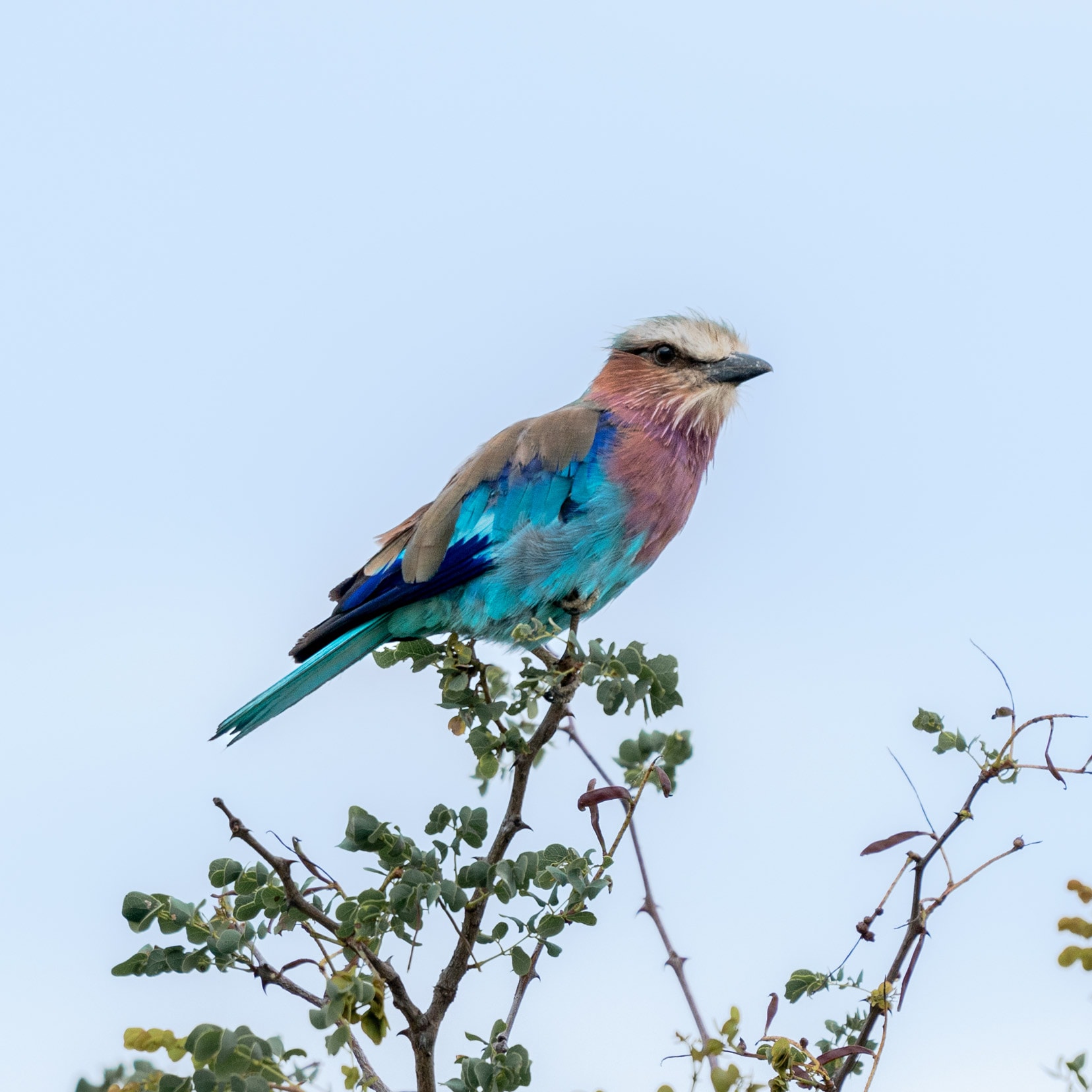
These beautiful birds, Lilac-Breasted Rollers, are a common sight in Kruger National Park. The first time I heard it, though, I was really surprised at its ungainly shrill — not at all in keeping with its gorgeous plumage.
The Lilac-breasted Roller is a showstopper in the bird world and a must-see for anyone road-tripping through South Africa.
With its vibrant plumage featuring seven different colours, it’s a photographer’s dream. You’ll often spot them perched on high vantage points like trees or telephone wires, scanning the ground for insects. They’re commonly found in game reserves like Kruger and open grasslands.
9. Southern Yellow-billed Hornbill
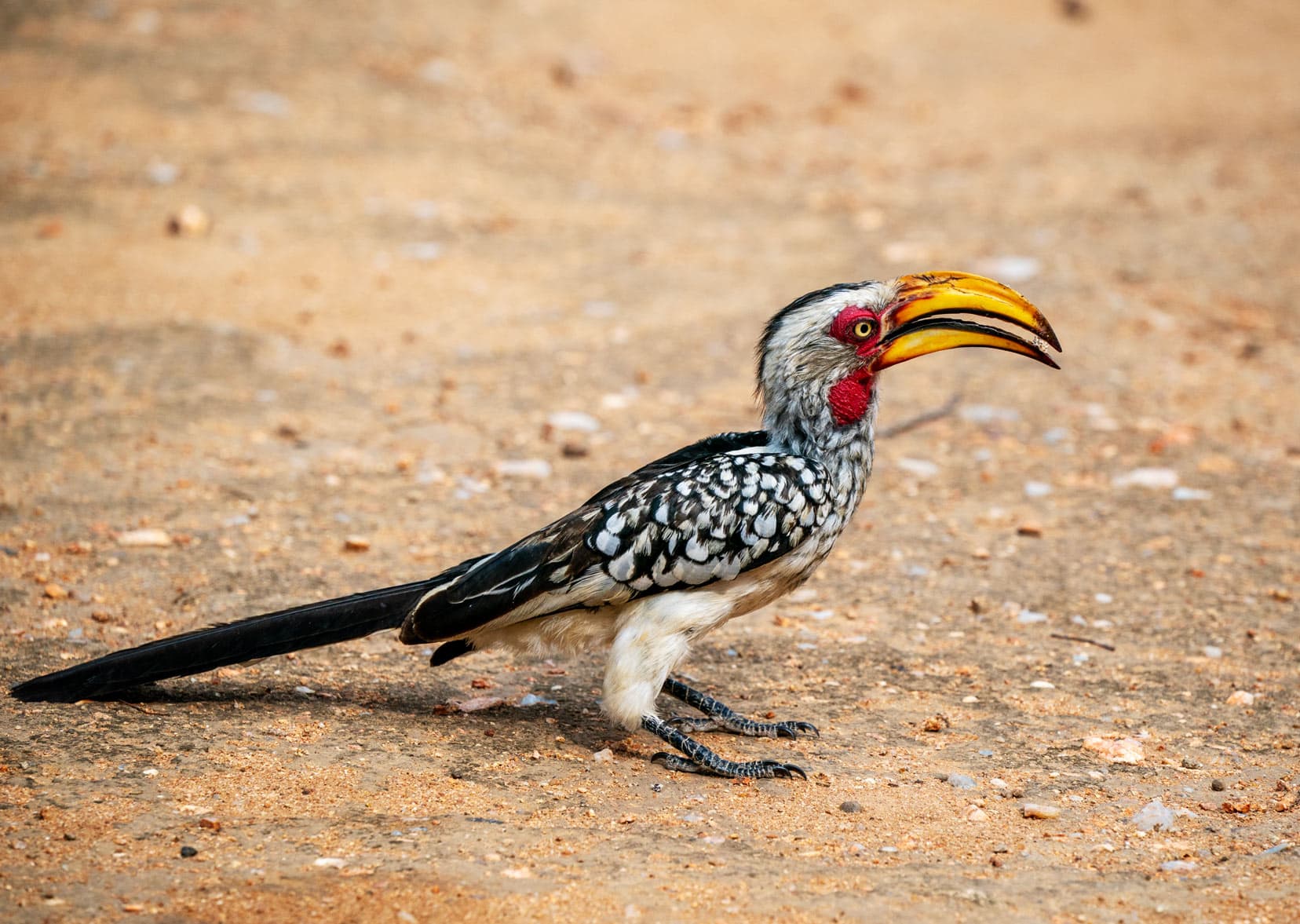
The Southern Yellow-billed Hornbill is another fascinating but common bird – especially in game reserves like Kruger. It is known locally as the “flying banana” because of its long, curved, yellow bill.
They are quite inquisitive birds who will sometimes come hopping around camp looking for scraps. They also like to look at their reflections. We found them pecking at our car wing mirrors on several occasions.
They are known for hanging out near mongoose dens as they have a symbiotic relationship with the mongoose. The mongoose digs in the dirt, disturbing bugs that the Hornbill can eat, and the Hornbill keeps an eye on the skies, alerting the mongoose to any danger.
10. African Hoopoe

The African Hoopoe is one of our favourite birds — we love its unique look, with its distinctive “crown” of feathers and its long, curved beak.
It’s a ground forager, so you can often see it probing the ground with its beak in search of insects and grubs. You can spot it in open woodlands, gardens, and even savannas.
So, wherever you’re exploring in South Africa, the Hoppoe is likely to make an appearance.
11. Crested Barbet
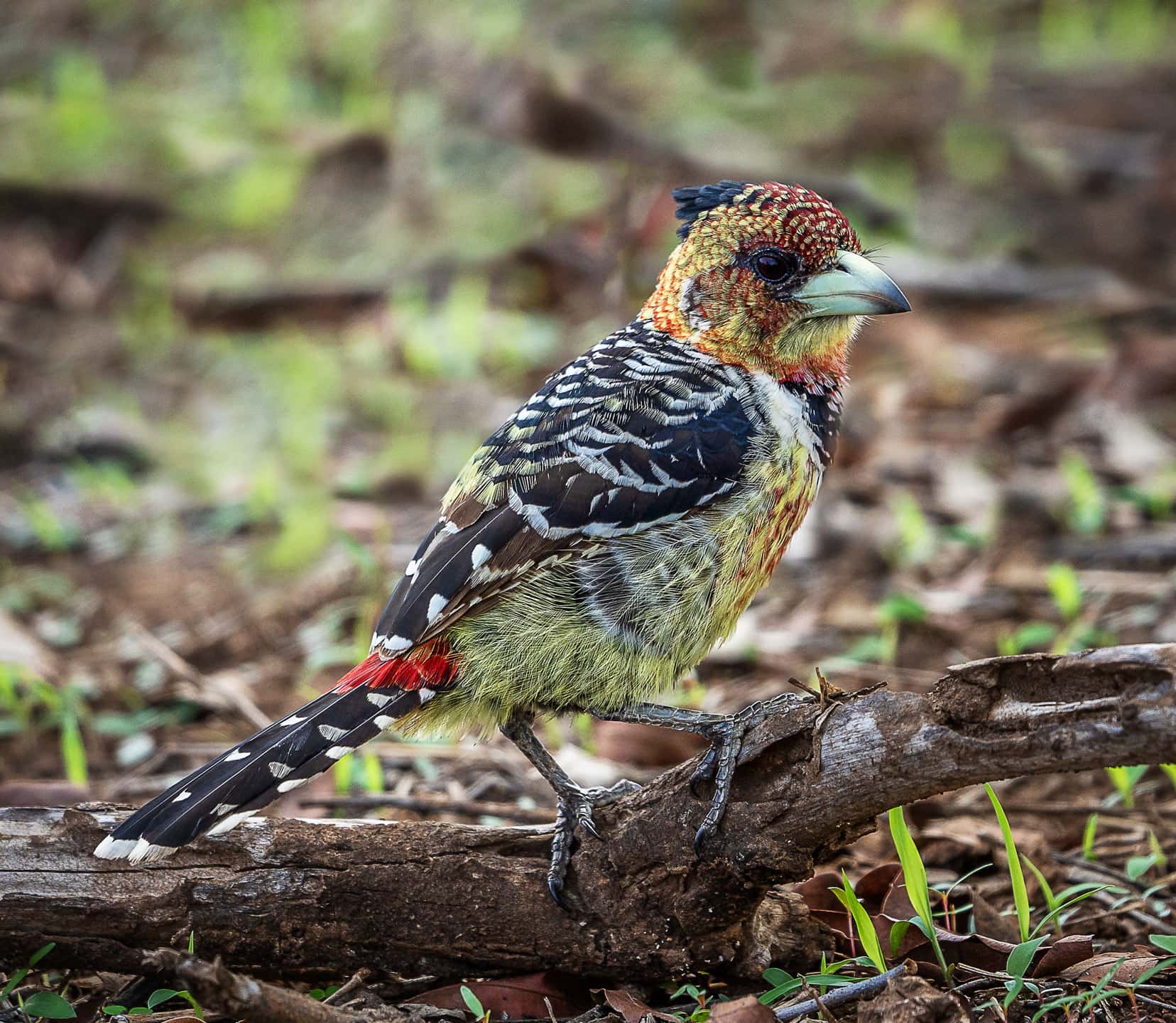
We always smile when we see a Crested Barbet – the punk rocker of little birds. It’s a colourful mishmash of feathers that can be found mainly on the eastern side of South Africa.
With its vibrant mix of yellow, red, and black feathers, this little dynamo is a splash of colour in the South African landscape. It’s known for its trilling call, a continuous “trrrrrrr,” which you’ll often hear before you spot the bird itself.
You’ll find it in various habitats, from forests and woodlands to gardens. So whether you’re in the bustling city of Joburg or the serene Drakensberg mountains, keep an eye out for this lively character.
12. Cape Starling
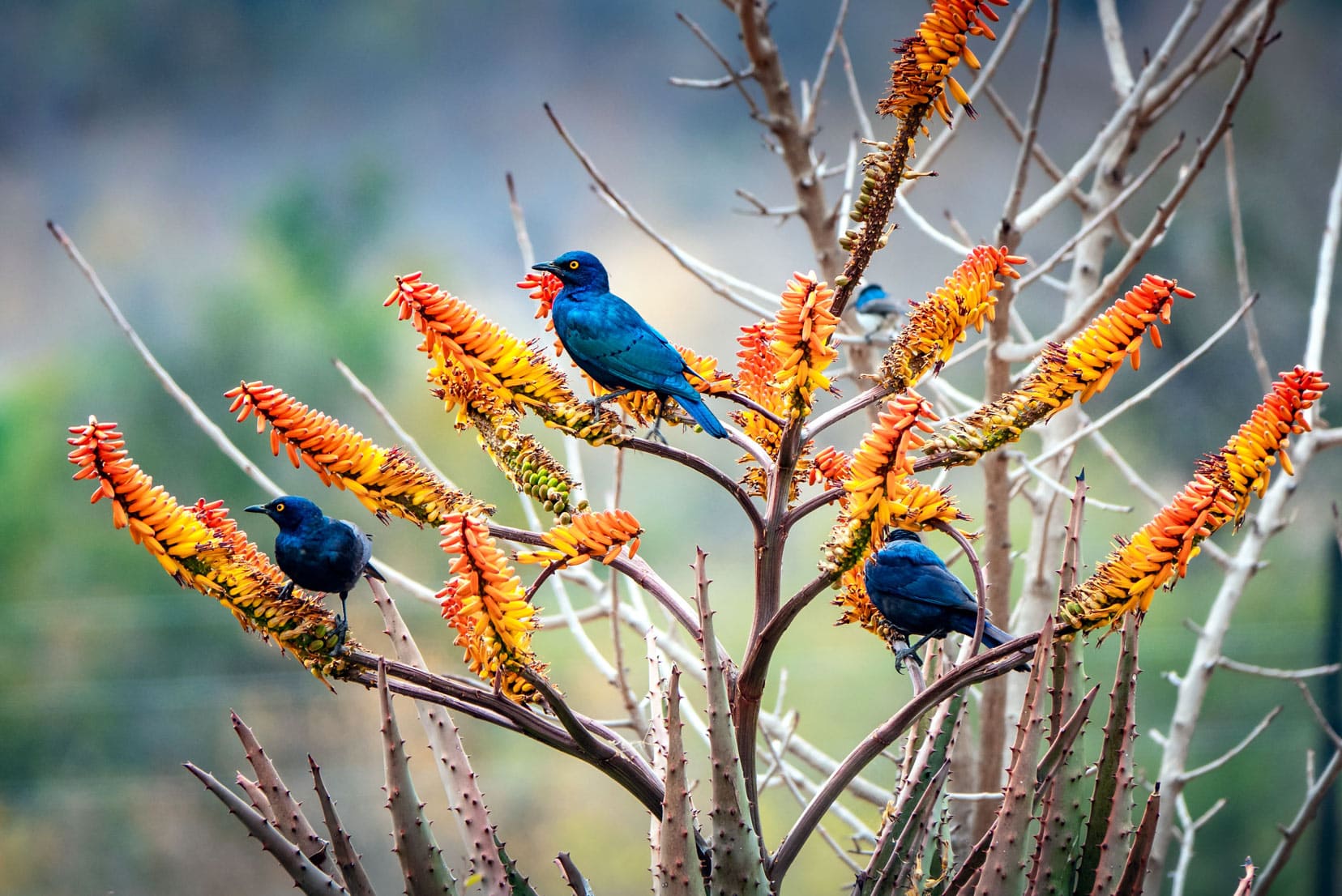
The very first time we saw the Cape Starling was in the Drakensberg area of South Africa.
A couple of these blue/green iridescent birds caught our eye, and we spent a whole afternoon trying to capture them on camera. Only to learn later that these blue starlings were so common we would see them everywhere — particularly around the camps in Kruger.
The Cape Starling is a social bird, so you’ll often see them in flocks, especially in open grasslands and savannas.
This little shimmering spectacle isn’t shy about coming close to campsites either. We often had them around our camps, and they would sometimes bury themselves in the sand with wings spread out to cool down.
There are several types of blue starling, and it can be difficult to distinguish between them all— but they’re all as stunning as each other.
So, as you’re road-tripping through South Africa, don’t forget to look out for this gleaming gem of the bird world.
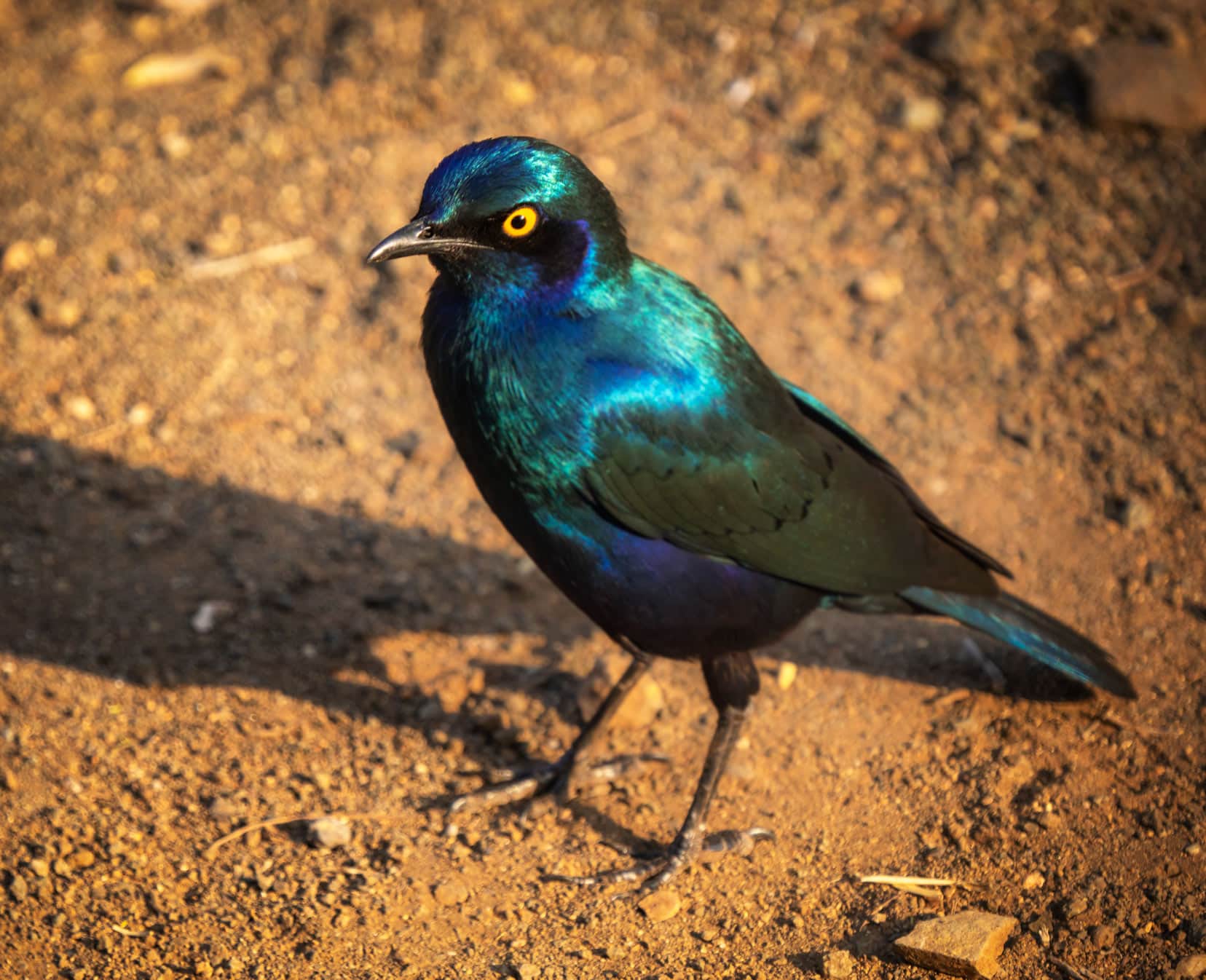
13. Grey Go-away Bird
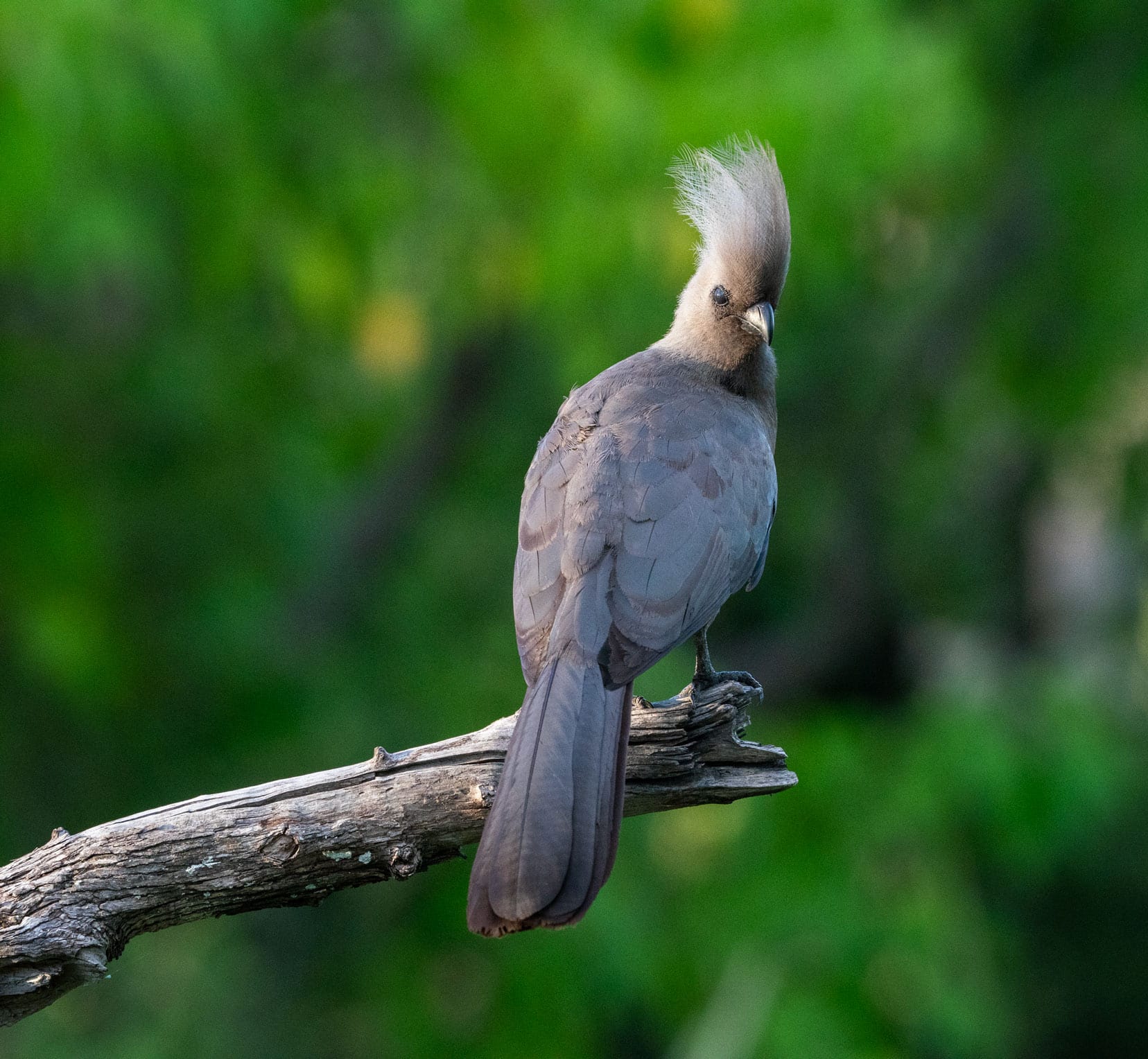
We first encountered the Grey Go-away bird in Klaserie Nature Reserve near Kruger. These large grey Louries are now called Turacos (some South African bird names changed recently, so it can get confusing when using older bird books!).
If you listen to its call, it sounds like it is saying, ‘Go away,‘. We often listen out for its call as it signals that other wildlife might be nearby. You can listen to its call here.
So, look up if you hear something that sounds like a grumpy neighbour telling you to leave. It’s probably just a Grey Go-Away Bird noting your presence.
Another member of the Turaco family that isn’t so common and only found in South Africa is the shy Knysna Turaco. We were lucky to have one in the trees above us when we camped at Hogsback in the Amathole Mountain Ranges of the Eastern Cape.
They are mainly seen along the Garden Route and aren’t easy to capture on camera as they are very timid.
I took several shots and had to manoeuvre myself very quietly and carefully to get this one (pictured below) without disturbing it.
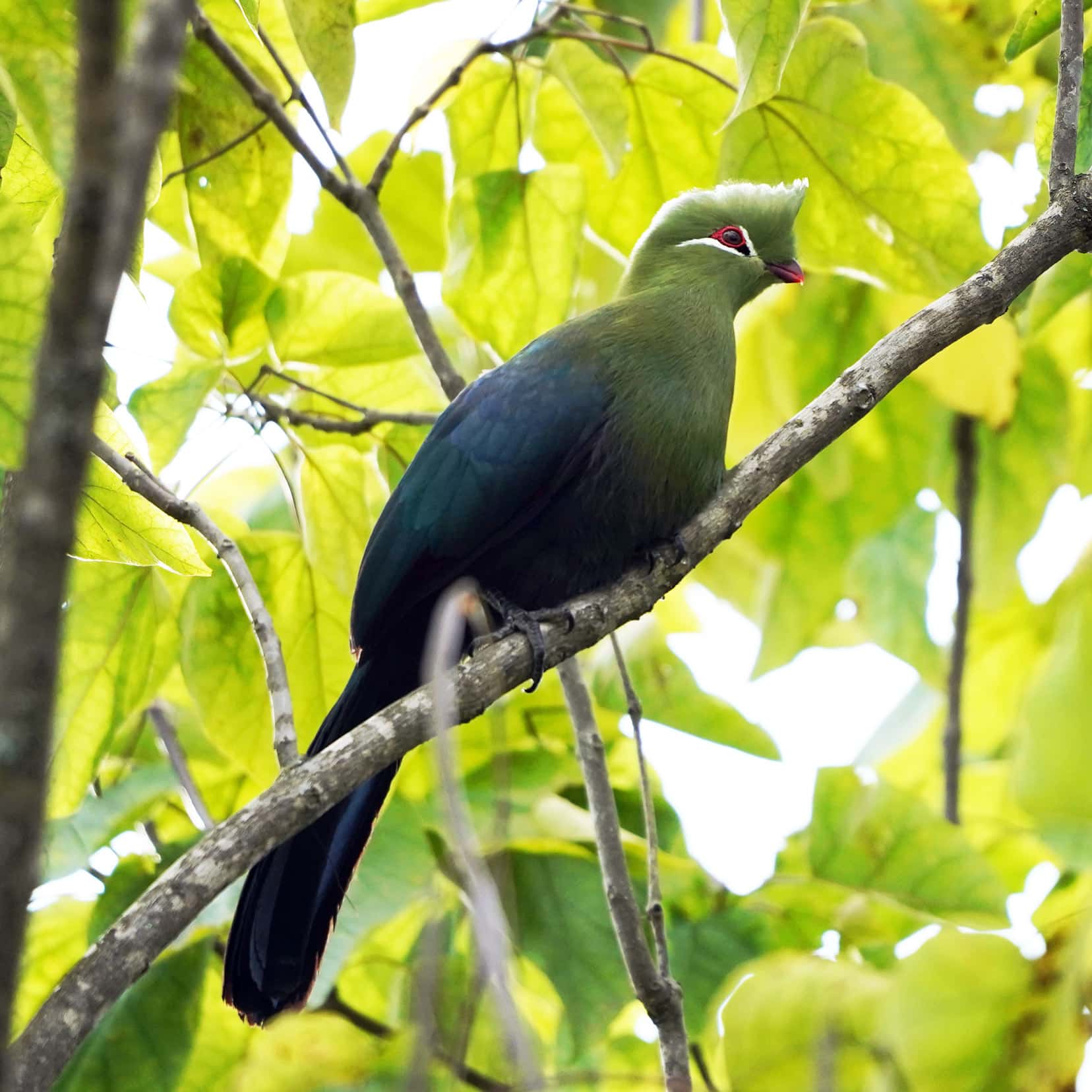
14. Southern masked weaver
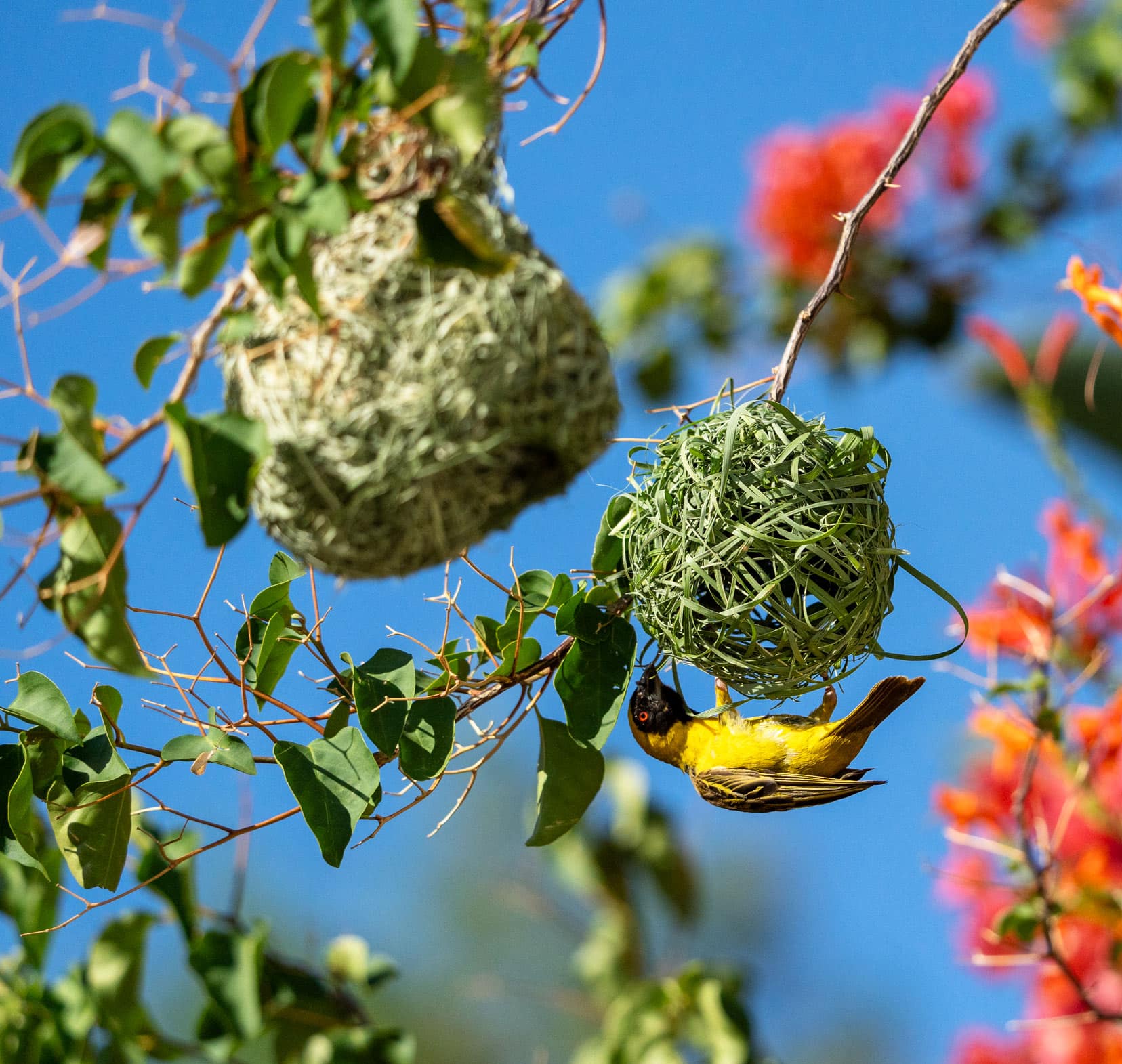
The Southern Yellow Weaver is a real showstopper, and we couldn’t believe the intricate nests that it builds. It’s common in wetlands, grasslands, and even urban gardens.
We first came across this yellow power house in Prince Albert, but later saw whole groups of them with their incredible nests all hanging from tree branches over the water.
The males are especially busy during the breeding season, weaving their elaborate nests to impress potential mates. Their nests are works of art, so keep an eye out for these clever little weavers as you travel in South Africa.
15. Southern Red Bishop
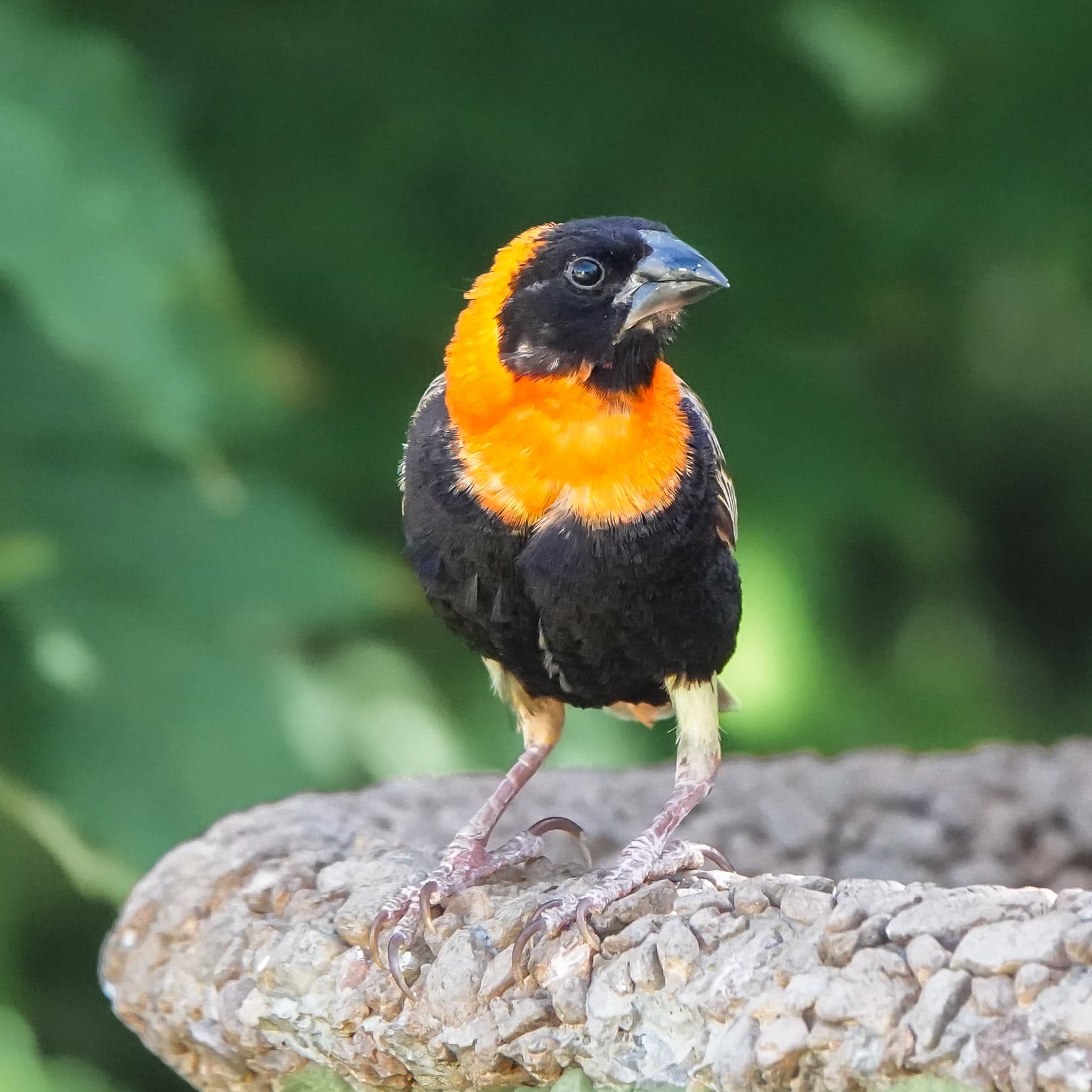
Sporting a vivid red and black colour scheme, the male Red Bishop is hard to miss, especially during the breeding season.
They are often found in wetlands and grassy areas, where they build their nests among reeds. The male is known for its elaborate courtship display, puffing up its feathers and performing a dance to attract a mate.
16. Hadeda Ibis
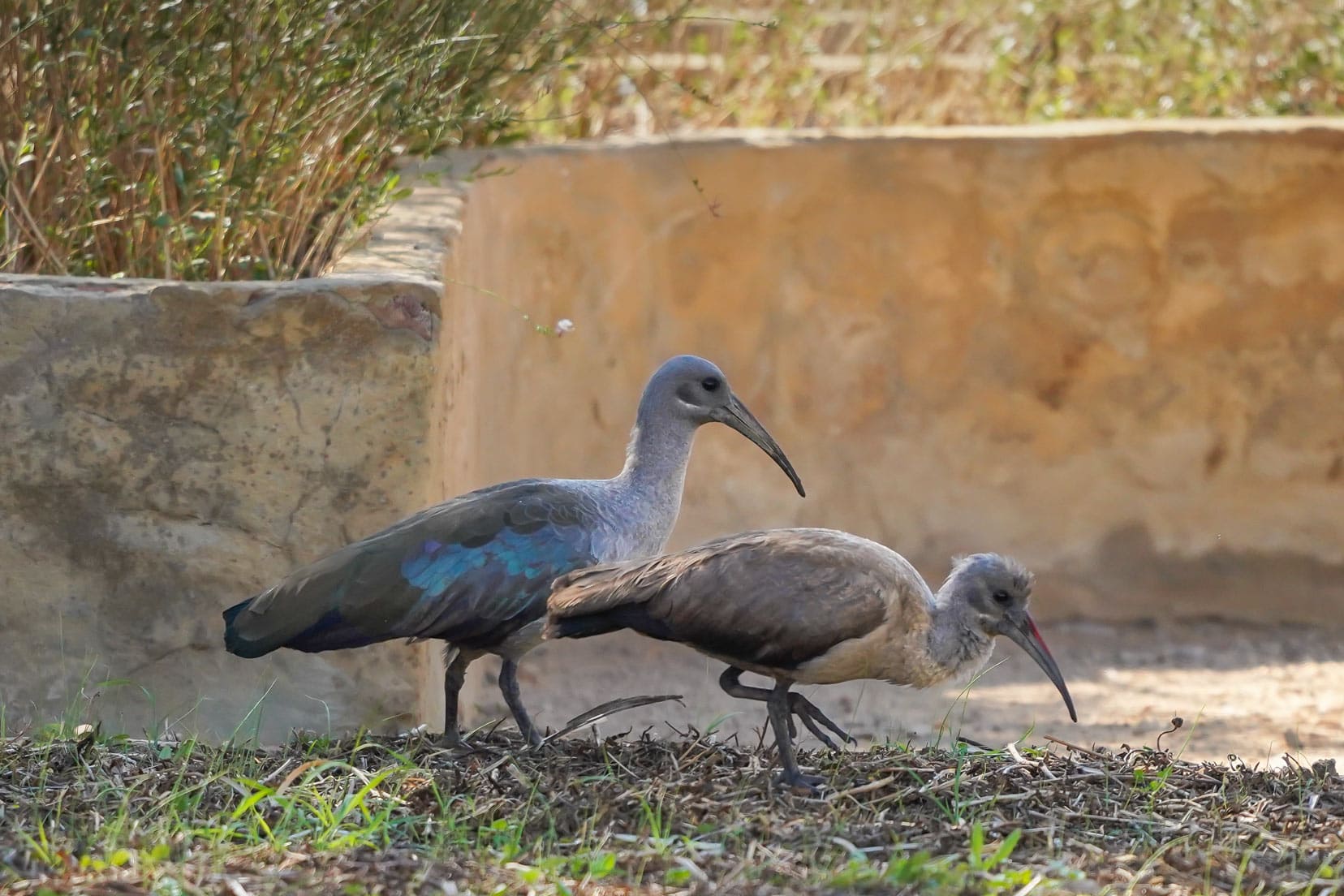
Hadeda Ibis – everywhere – but not so many in Kruger or arid places
The Hadeda Ibis is another bird you’ll likely encounter on your South African road trip. It’s a large, dark bird with an iridescent sheen on its feathers and a long, curved bill.
You’ll often find them in wetlands, open fields, and even urban gardens. They’re common in places like Johannesburg and the Garden Route.
Known for its loud, trumpeting and distinctive “haa-haa-haa-de-dah” call, this bird is hard to ignore. When we were house-sitting, one of the dogs would start howling every time it heard the hadedas – which meant we were getting double the noise!
These birds are early risers, so don’t be surprised if their calls serve as your natural alarm clock.
Essential Gear for Birdwatching
You’ll want to be well-prepared when you’re setting off on a birdwatching adventure in South Africa. Here’s a breakdown of the must-have gear to enhance your experience.
Binoculars
A good pair of binoculars is your best friend for birdwatching. Go for a pair with at least 8x magnification for clear, up-close views. We have and recommend the Vortex Optics Diamondback 10 x 42.
On our first trip, we shared a pair but found this didn’t work so well because the bird was often gone by the time the second person got a look. Therefore, we recommend having a pair of binos each.
Camera
If you love capturing the beauty of nature, then a camera with a good zoom lens is essential. This way, you can relive the experience and share it with others.
All of these images were captured with my Sony a7III coupled with the Sony 200-600mm f/5.6-6.3 G OSS lens. Read an up-to-date guide about our travel photography equipment here.
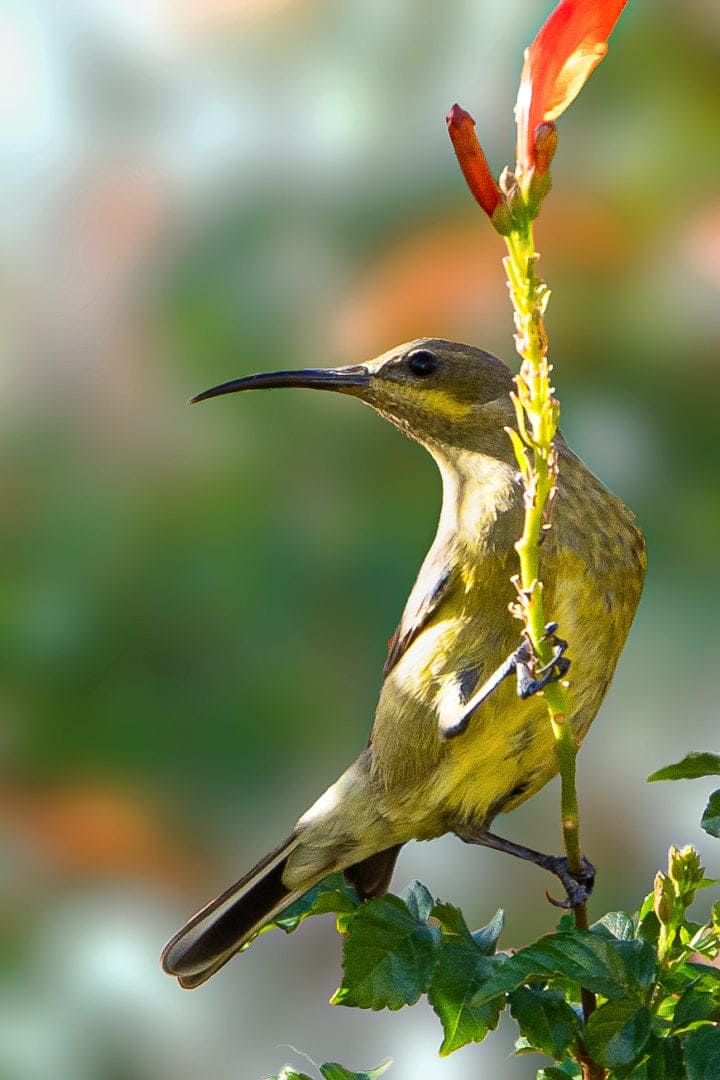
Bird Guidebook
A comprehensive bird guidebook can be invaluable. It helps you identify birds and understand their behaviours. Opt for one that’s specific to South Africa or Southern Africa for the most accurate information.
We bought Birds of Southern Africa: The Complete Photographic Guide by Ian Sinclair and Peter Ryan, and it’s awesome because it has real photos. Many bird guidebooks have drawings of the birds rather than photos, and it’s harder to ID them.
We also use the Kruger App, which has all the common birds you’ll find in Kruger, which includes many you’ll find throughout South Africa.
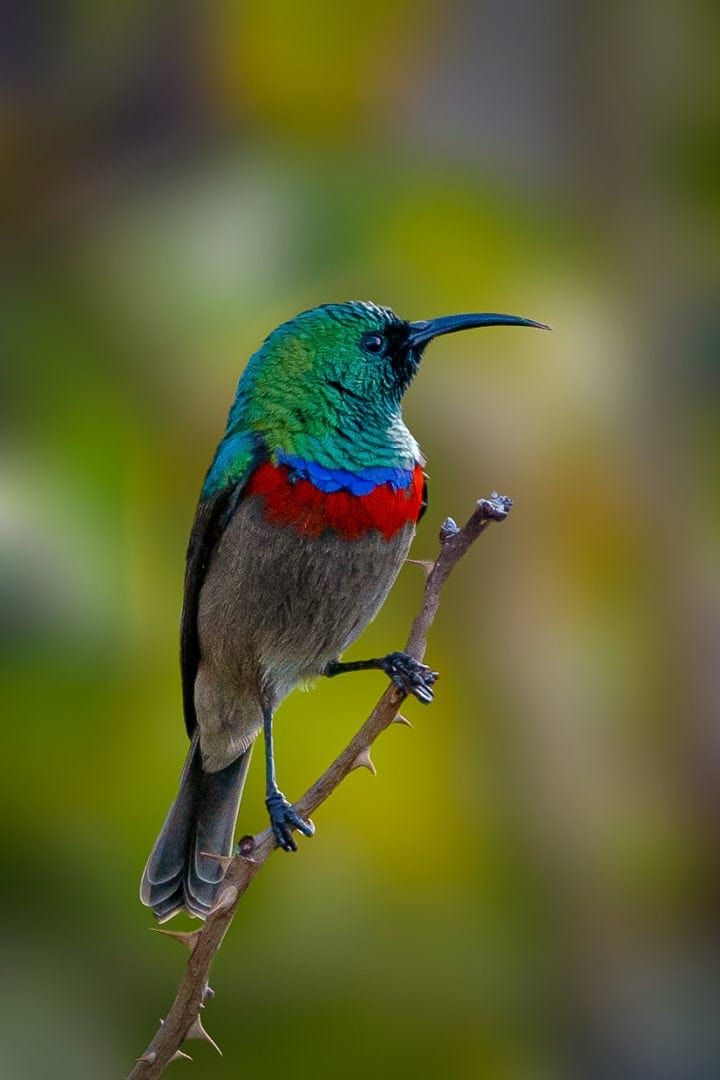
Why Birdwatching in South Africa is Special
South Africa’s Diverse Ecosystems
South Africa is a haven for birdwatchers, and it’s not just because of the sheer number of species you can spot. What sets this country apart is its incredibly diverse ecosystems.
From the arid landscapes of the Karoo to the lush wetlands of iSimangaliso, each region offers a unique backdrop for birdwatching.
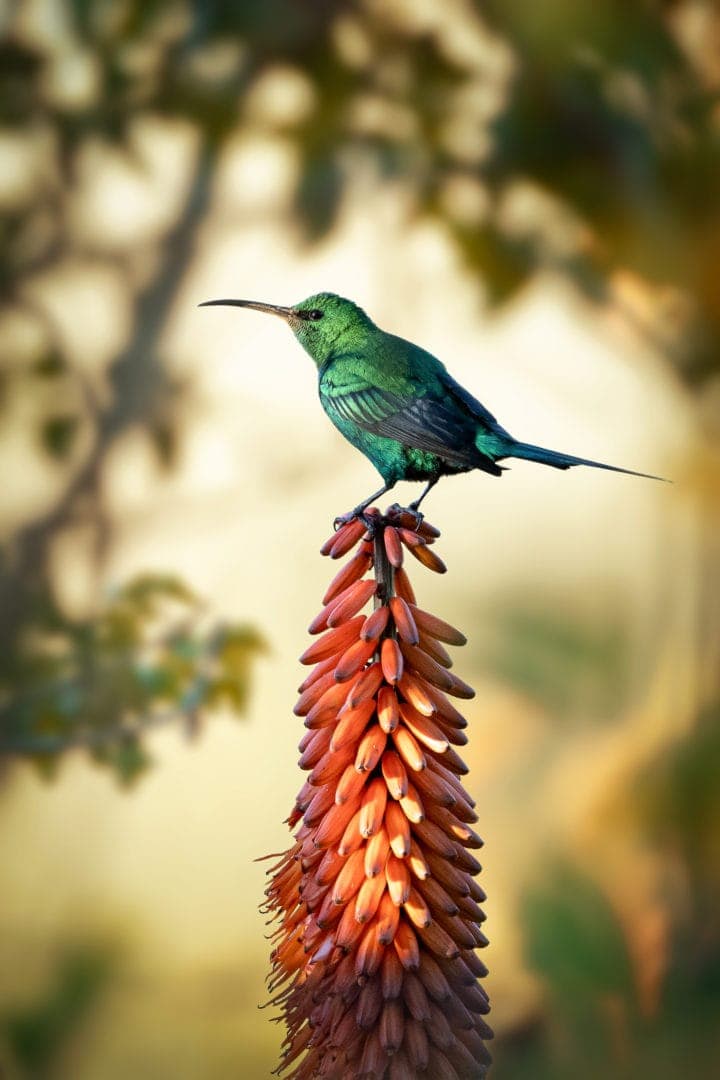
Birds You Won’t Find Anywhere Else
Many of the birds you’ll encounter are unique to South Africa or the southern African region. So, even if you’re an avid birdwatcher, you’re in for some new feathery surprises.
It’s not just about ticking off a list; it’s about the thrill of seeing something entirely new.
A Photographer’s Paradise
For the snap-happy among us, South Africa’s birds’ vibrant colours and unique behaviours offer endless photography opportunities. Just imagine capturing a tiny Sunbird’s iridescent hues or an African Wood Hoopoe’s striking appearance.
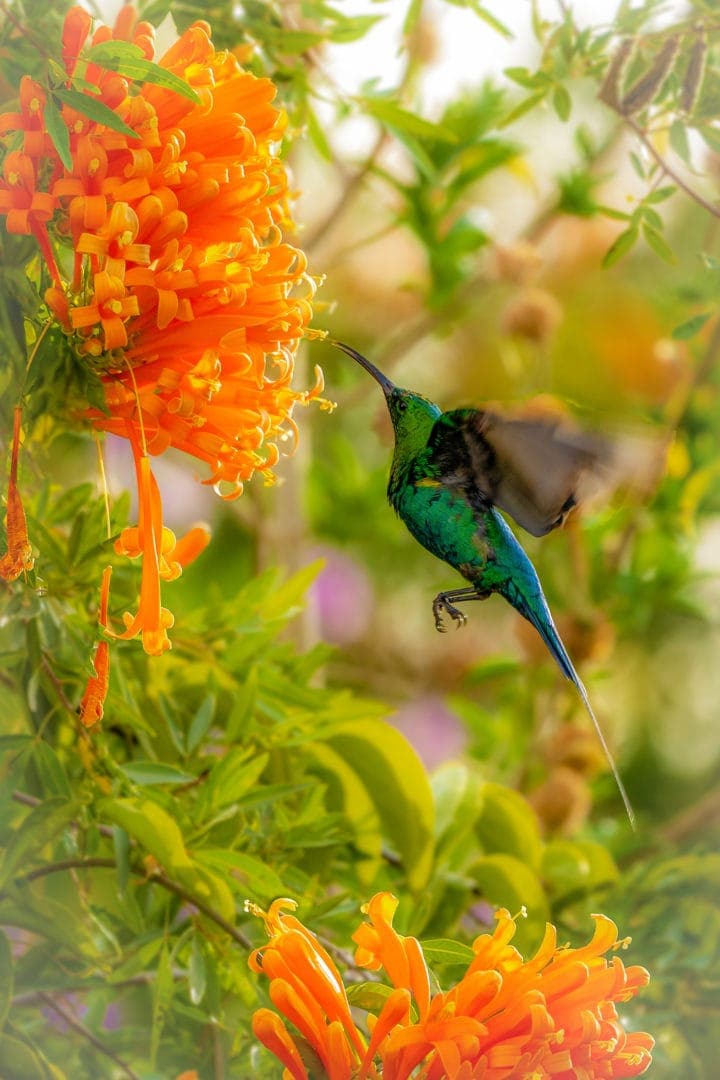
Shooting them mid-flight was a near-impossible task, and even when they were flitting around the flowers, I had to be quick to acquire a shot.
Capturing bird images has taught me that you need to be patient, be still, listen to your surroundings and wait for the moment. Repeat and repeat again. It’s a winning formula.
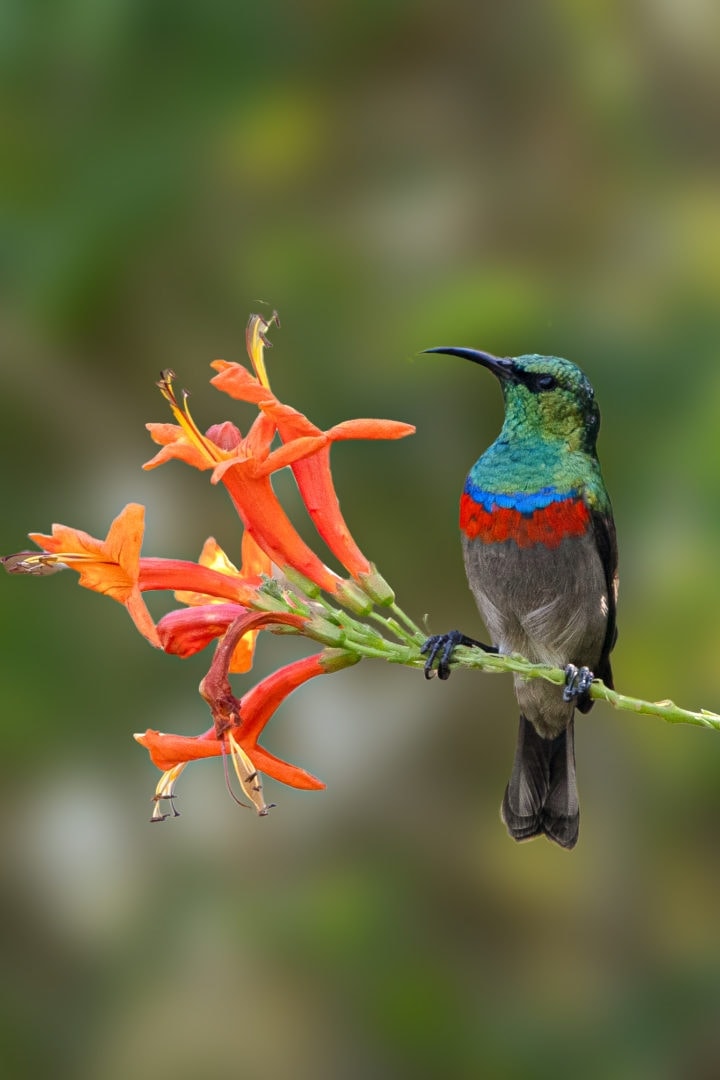
Best Times for Birdwatching in South Africa
Birdwatching is a year-round activity in South Africa, but there are optimal times to spot specific species and enjoy vibrant birding communities. Here’s what you need to know.
Seasonal Variations
- Spring and Summer: From September to March, migratory birds from Europe and Asia make South Africa their home. It’s a fantastic time to see a variety of species, especially in wetlands and coastal areas.
- Autumn and Winter: April to August is the dry season. While you might see fewer migratory birds, resident species are easier to spot as they gather around water sources.
Time of Day
- Morning: The early bird catches the worm, and the early birder catches the bird. Dawn is often the best time for birdwatching, as many species are most active during this time.
- Late Afternoon: As the day cools down, birds become active again. The late afternoon is another excellent time to spot different species, especially those that are more nocturnal.
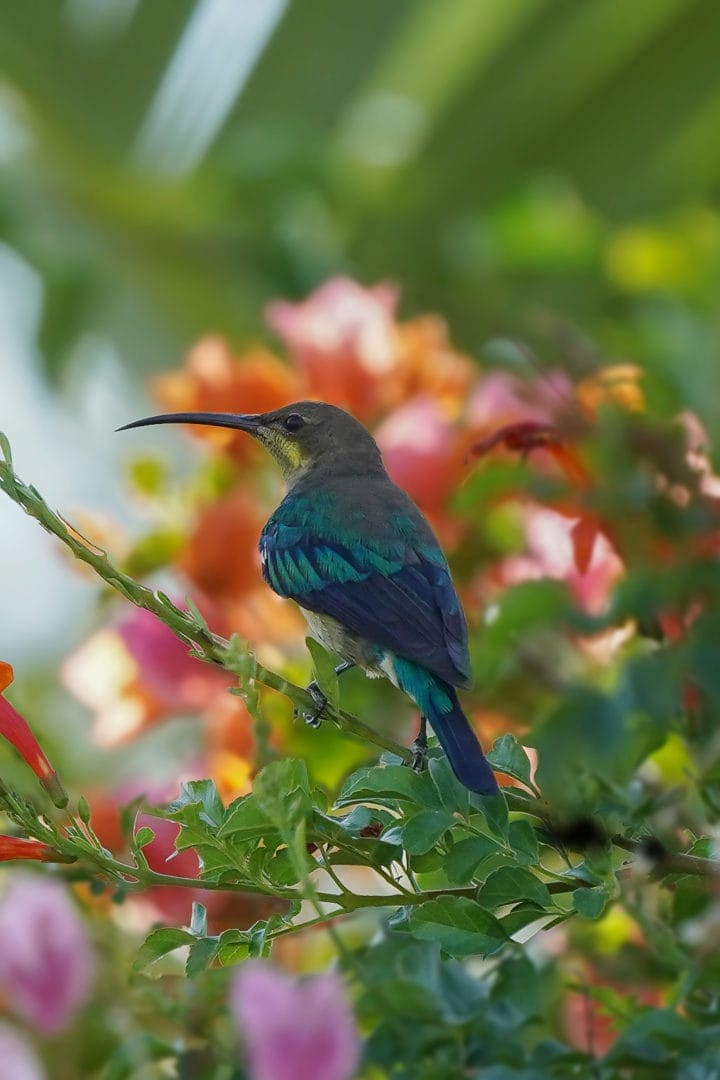
Photos of Common Birds in South Africa … That’s a Wrap
So there you have it—a short guide to some of the most common birds you’ll see in South Africa. From the vibrant Lilac-breasted Roller to the tiny flighty sunbirds, South Africa offers a birding experience like no other.
Don’t forget to pack your essential gear, including a reliable pair of binoculars and a handy bird guidebook. And remember, timing is everything. Whether you’re an early riser or a sunset admirer, there’s always a perfect moment to connect with nature.
So, what are you waiting for? Plan your road trip, hit the road, and let the birdwatching begin. Your feathery friends are waiting.
Safe travels and happy birding!
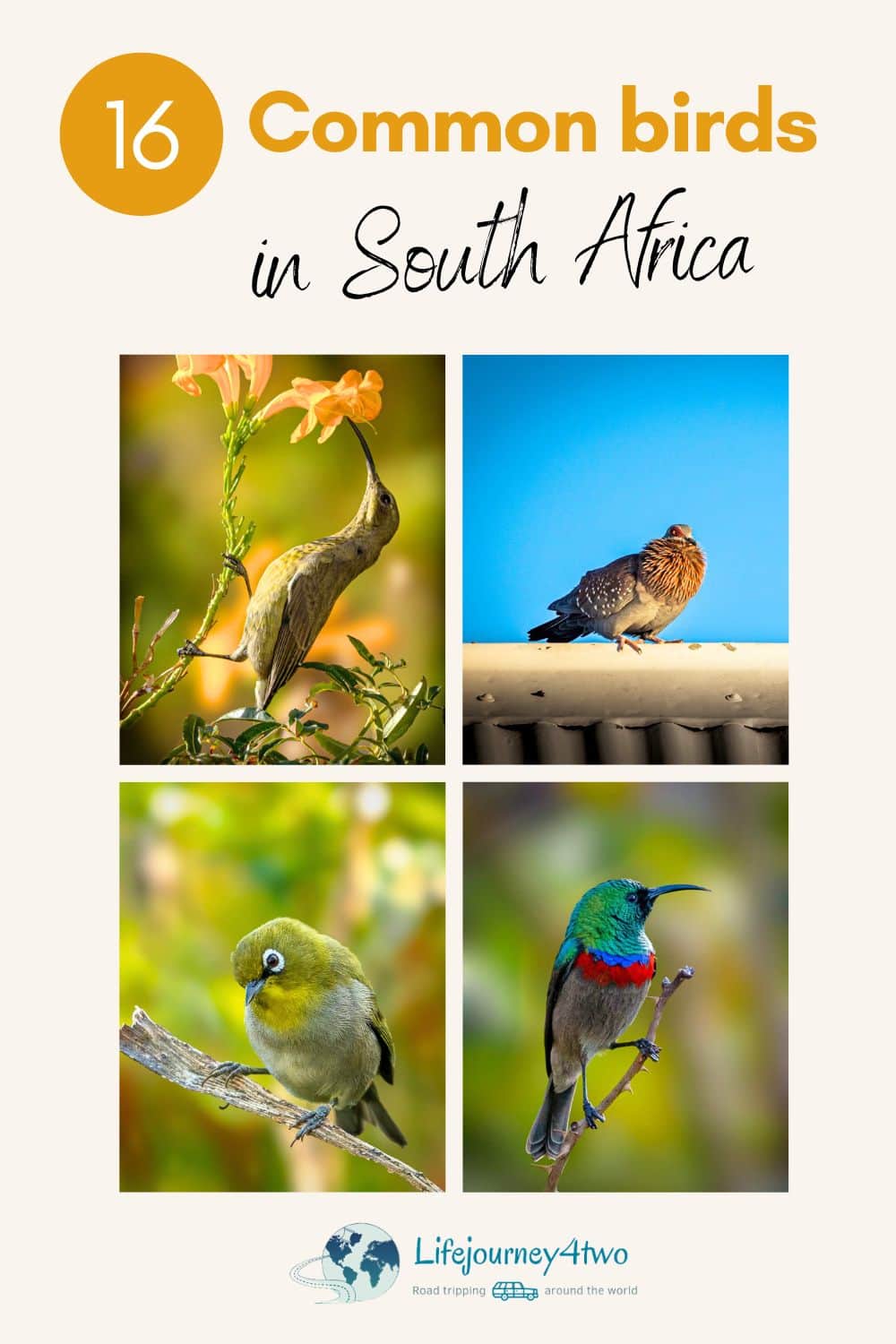
Read More…
- Landscape South Africa: 3 Fantastic Western Cape Mountain Passes
- Lesotho Road Trip – Crossing the Mountain Kingdom
- Our TWO RARE sightings of Pangolins in the wild
Planning Your Travels?
These are the travel resources we recommend and use when planning our trips.
- 🚘 Car Hire: We use DiscoverCars.com
- Motorhome/Campervan Rental: We highly recommend the Motorhome Republic
- 🪪 Order your International Driver’s Licence online here
- 🛏 Book Accommodation: We use Booking.com to find accommodation that suits our budget
- 🐶 Pet Sitting/Pet Sitters: Check Out TrustedHousesitters here (Use our Discount code: LIFEJOURNEY25 for 25% off. )
- Activities and Experiences: Get Your Guide and Viator
- Travel Insurance: Safetywing or World Nomads
- 🥾 Travel Gear and Accessories: Check out our top picks here — Lifejourney4two page on Amazon
For a more thorough list, visit our Travel Resources page here.

